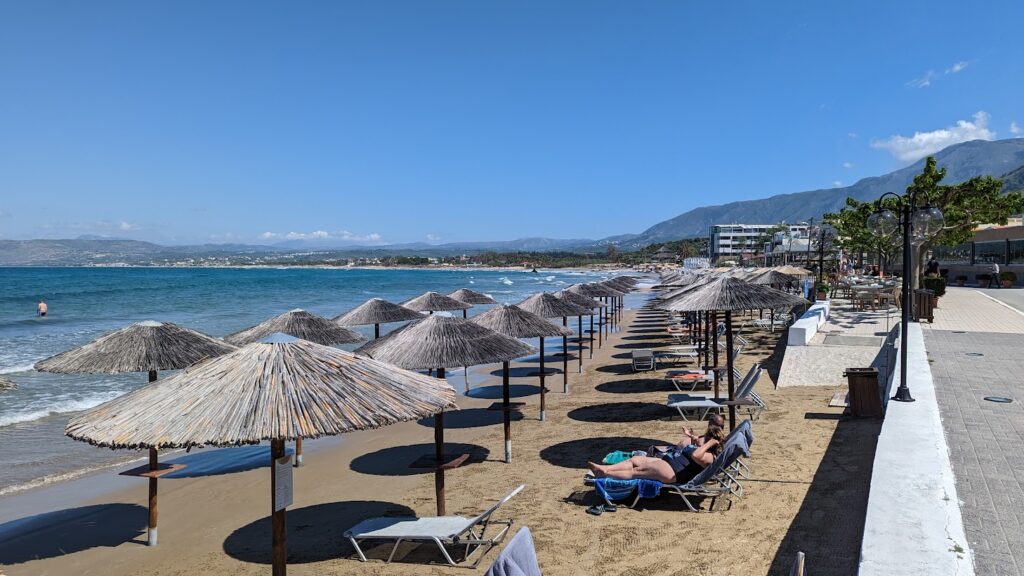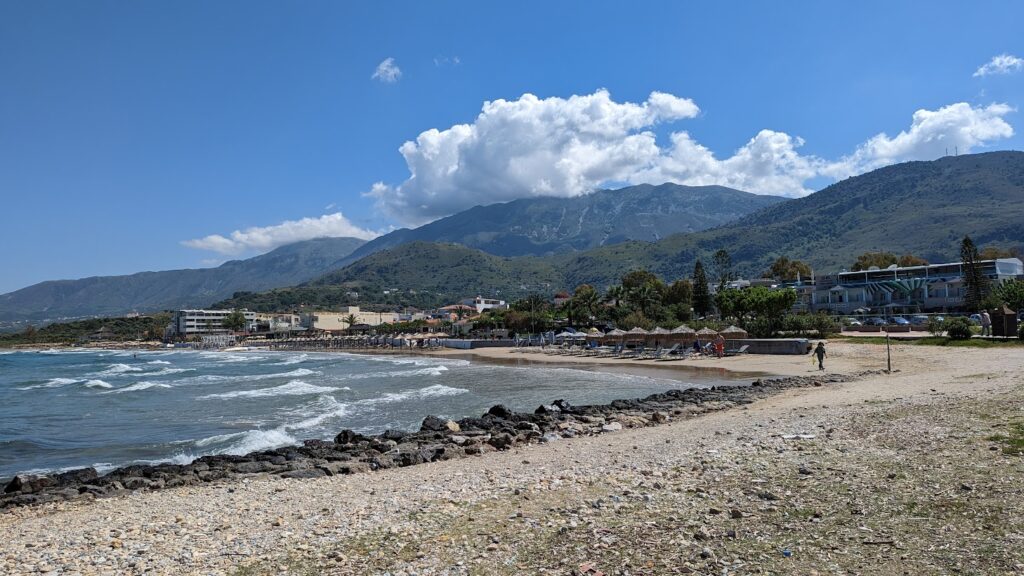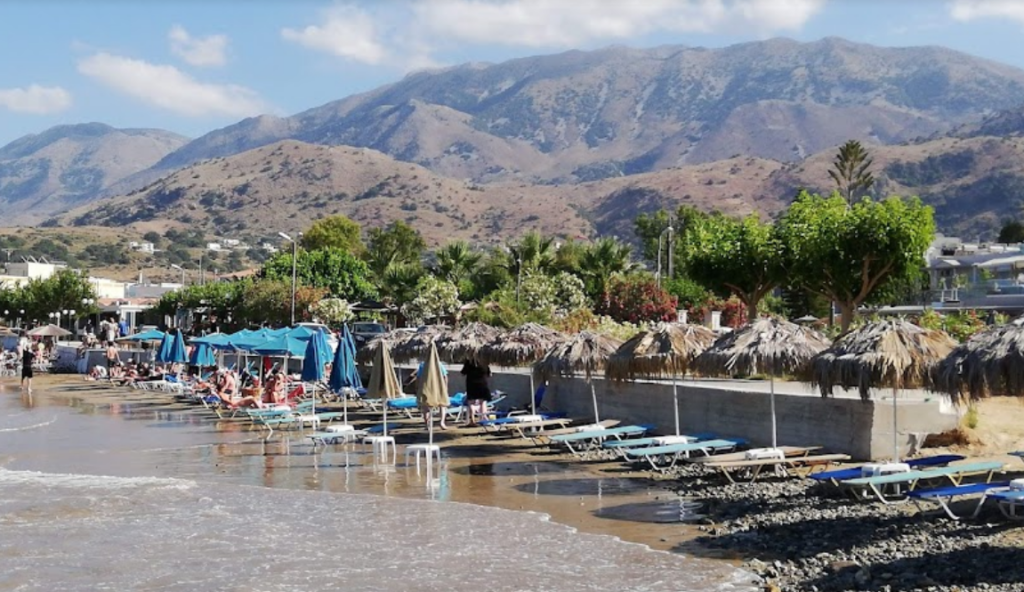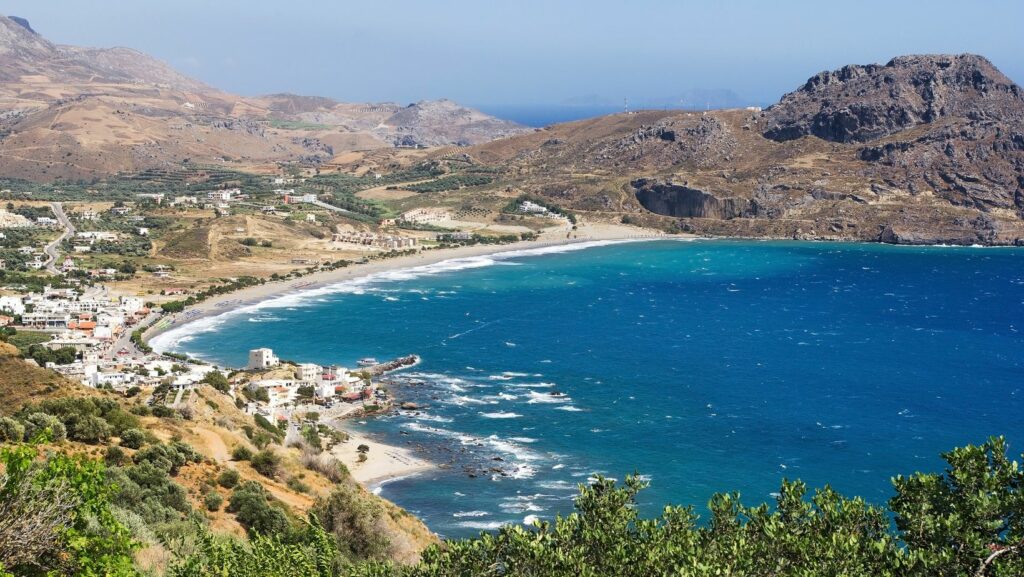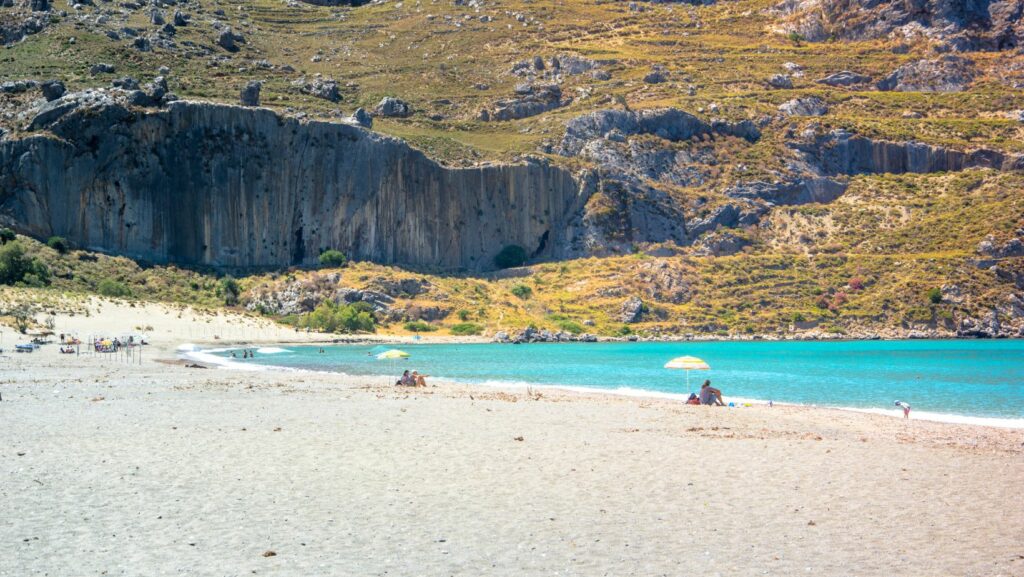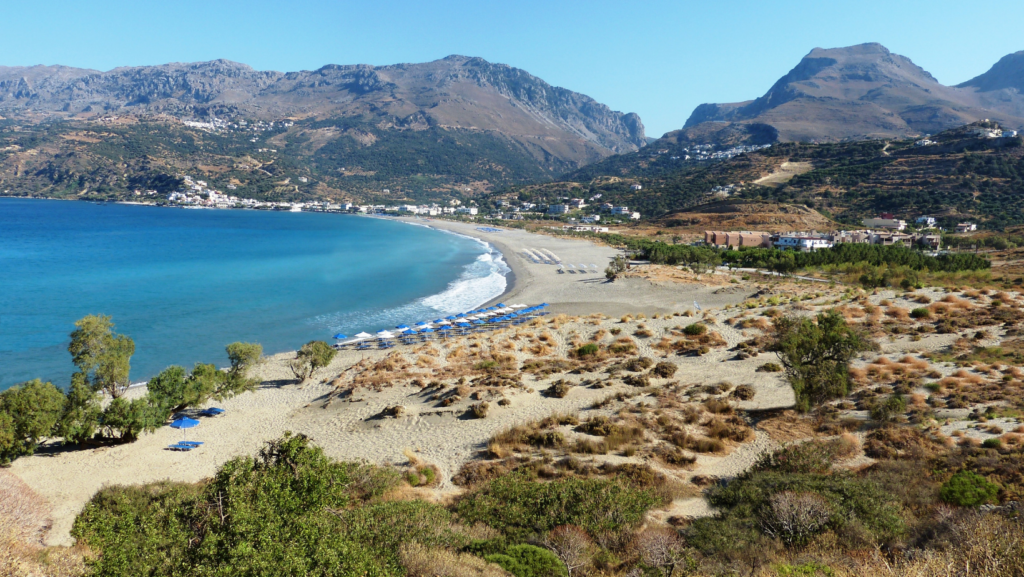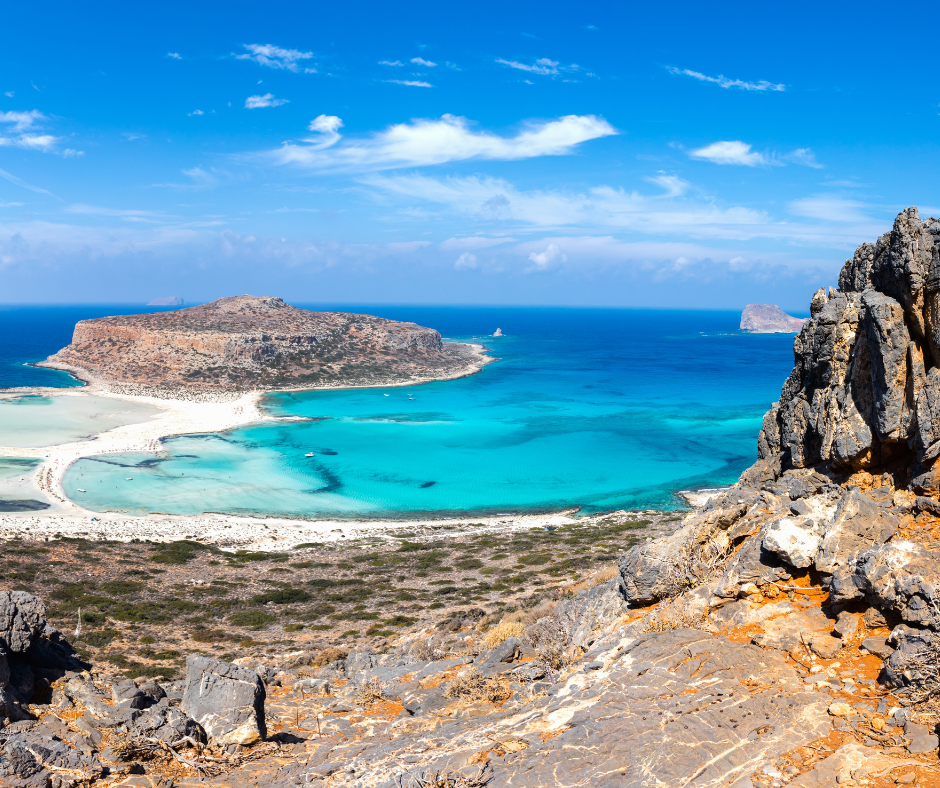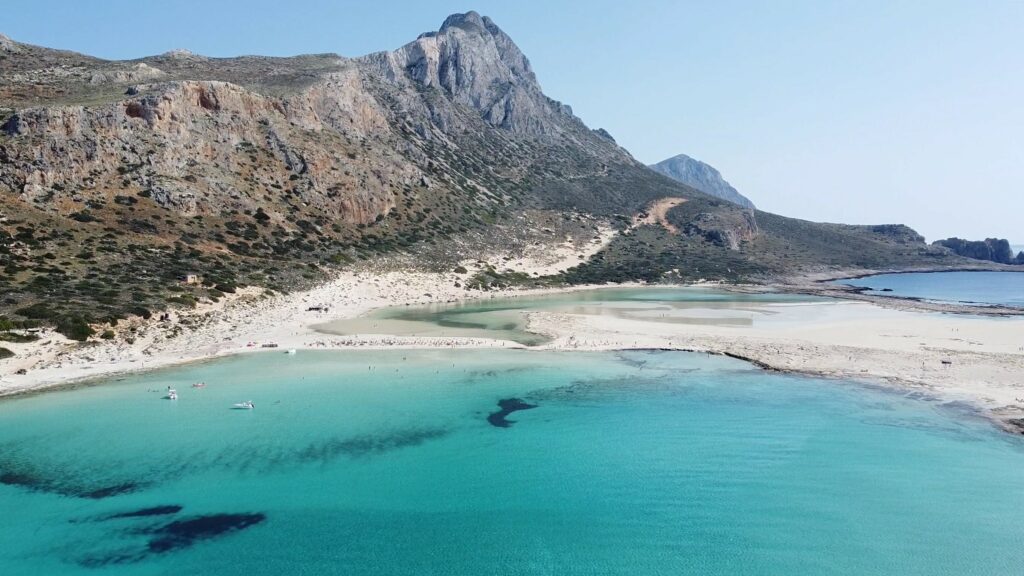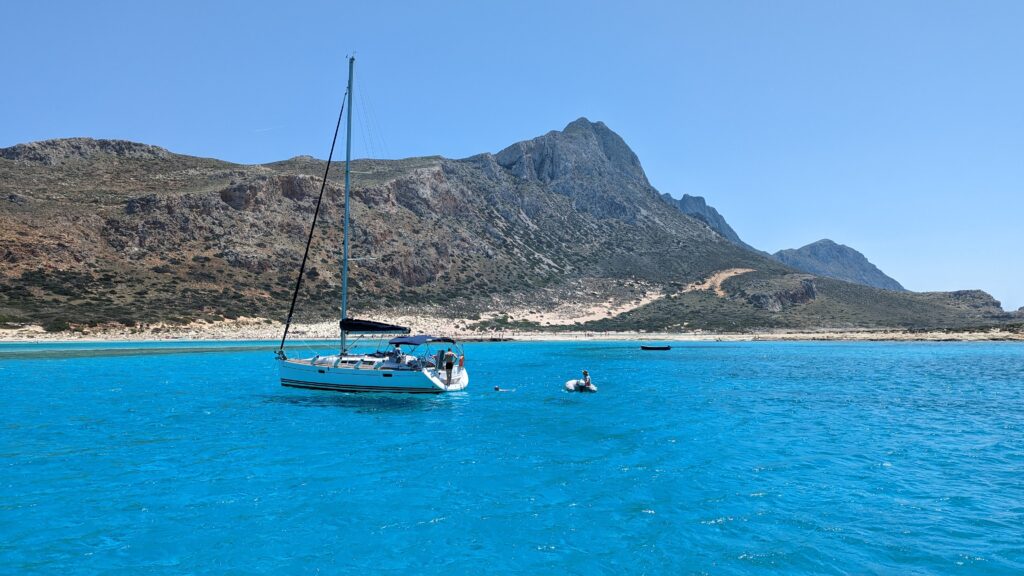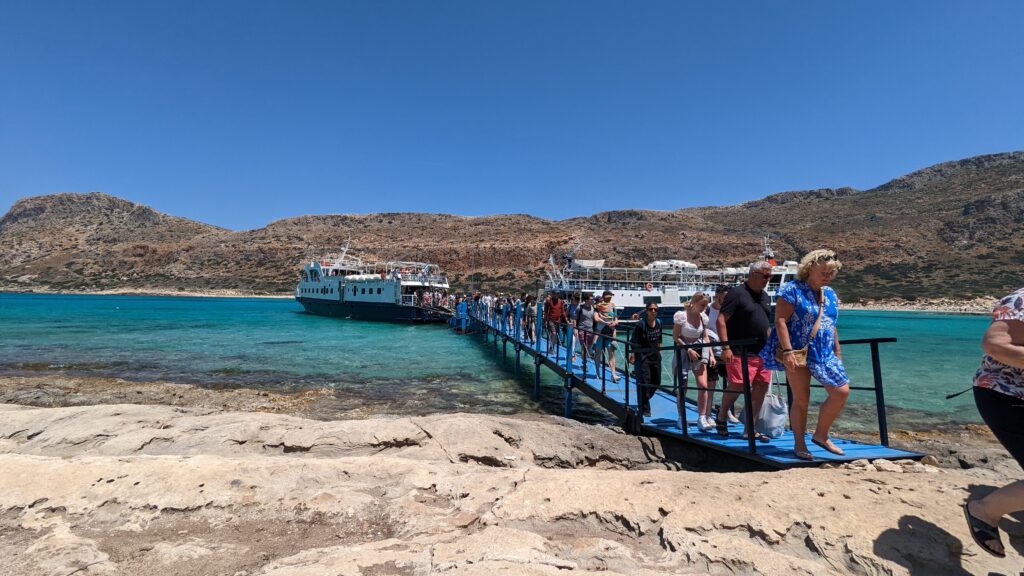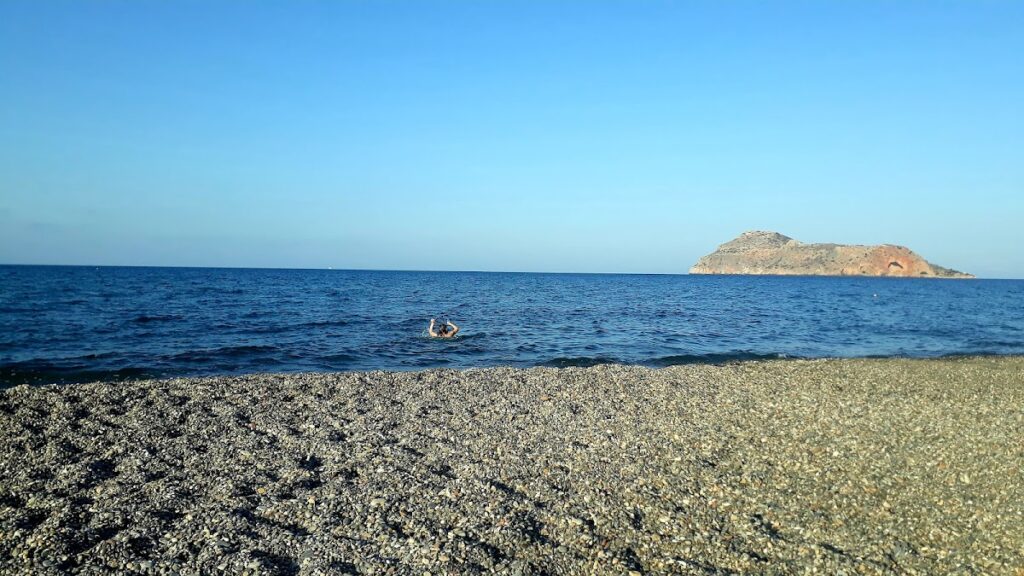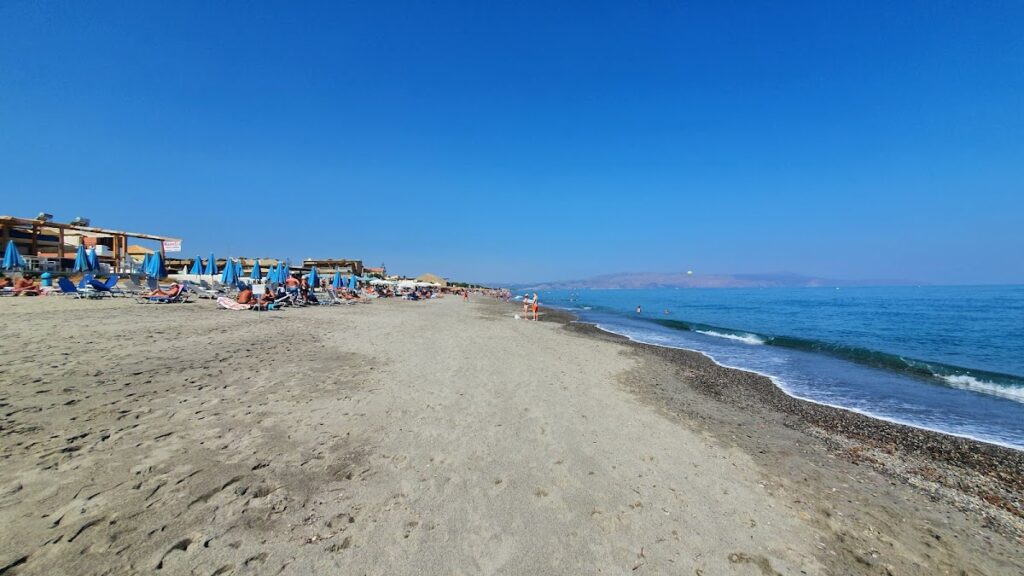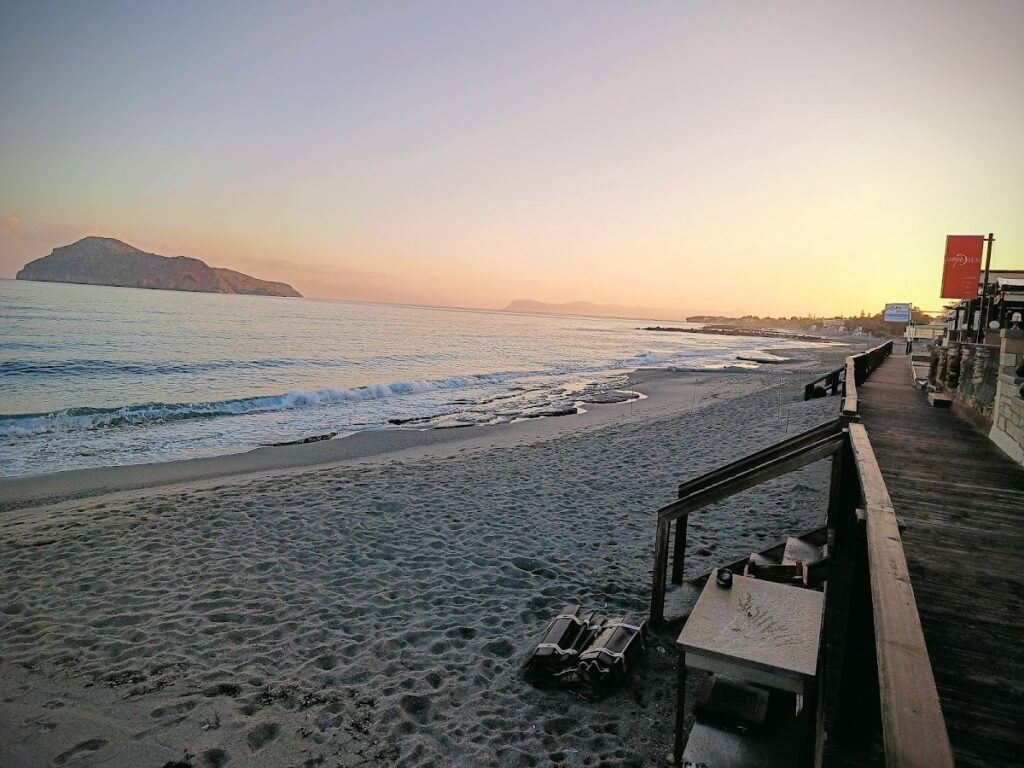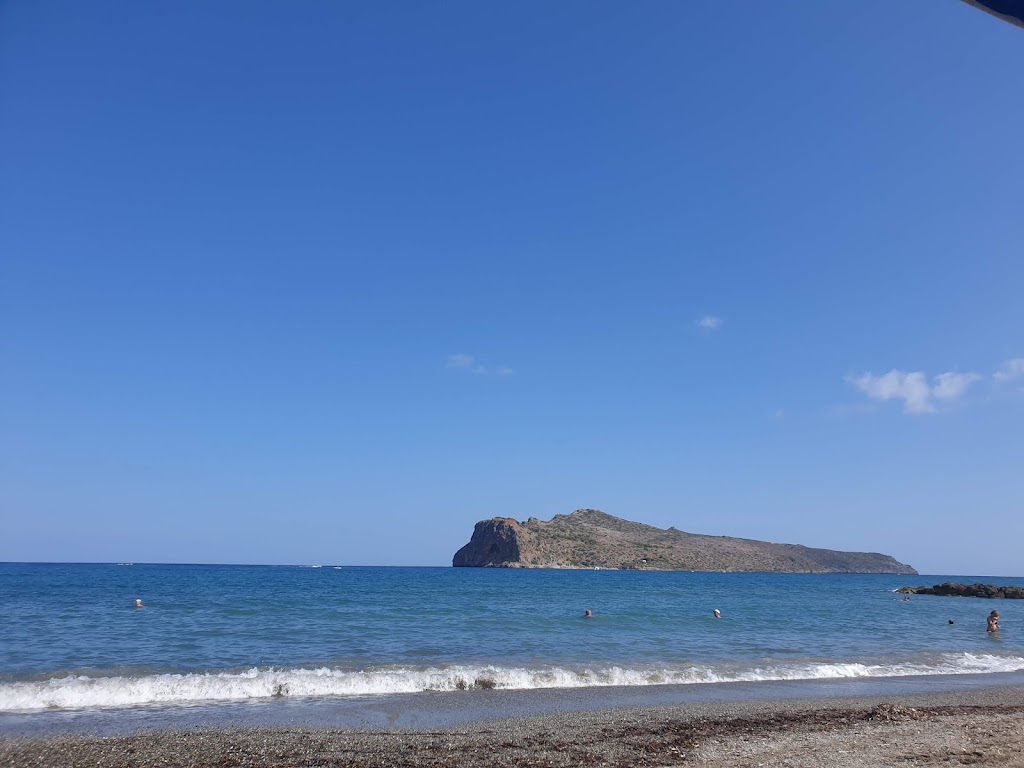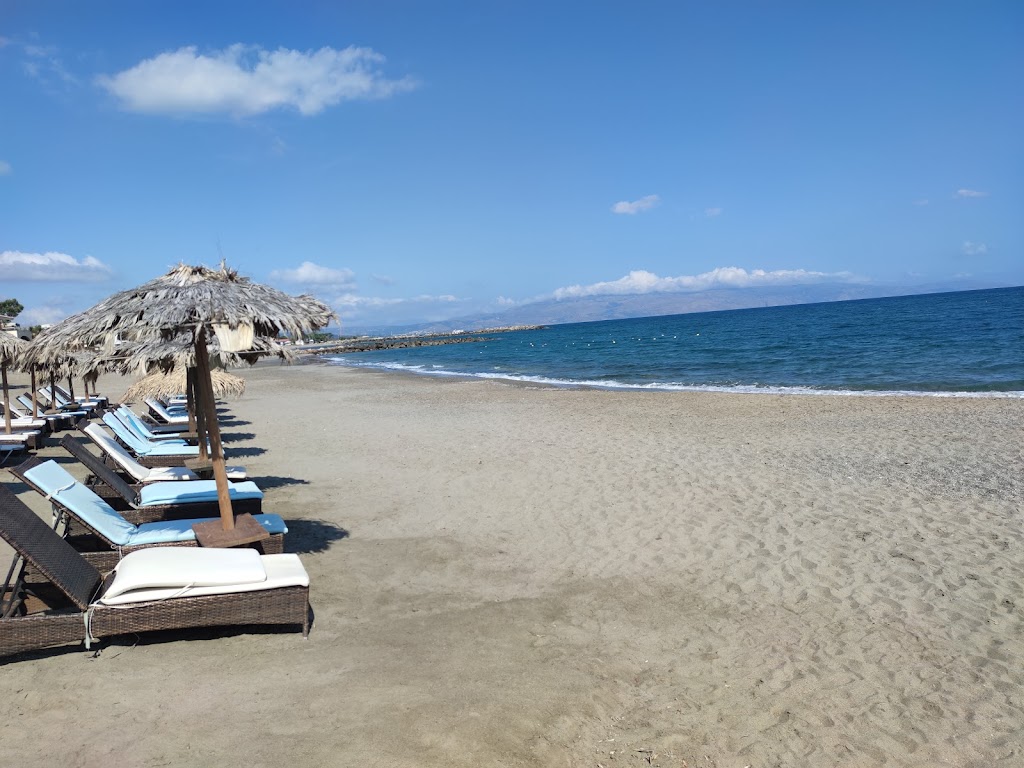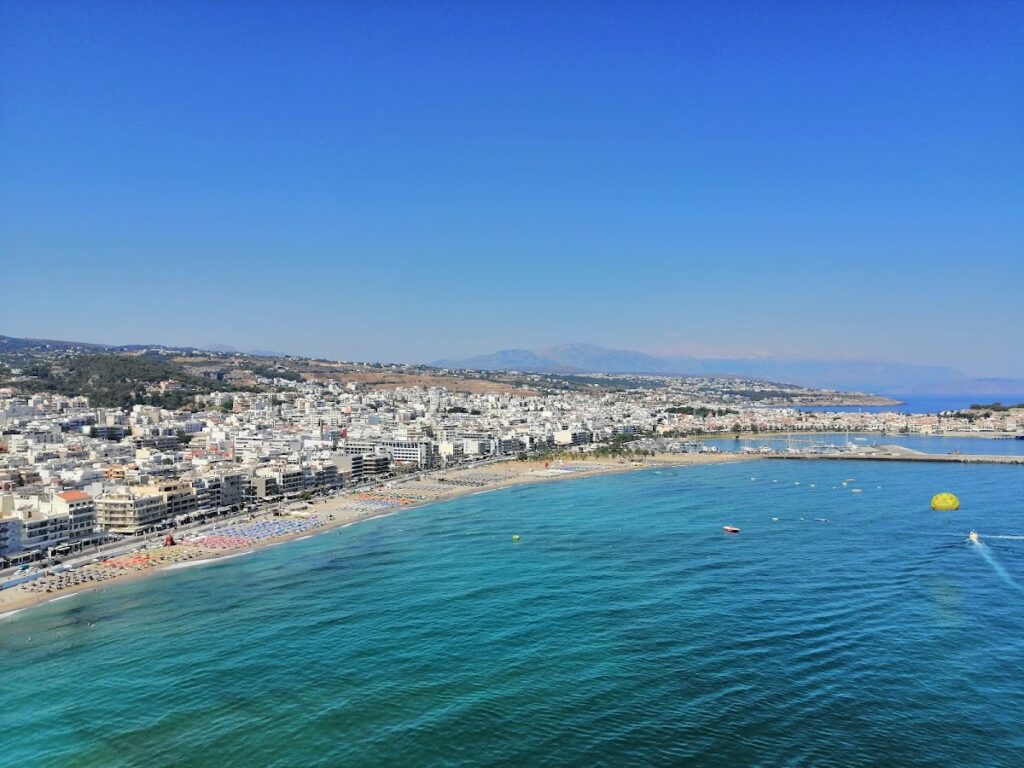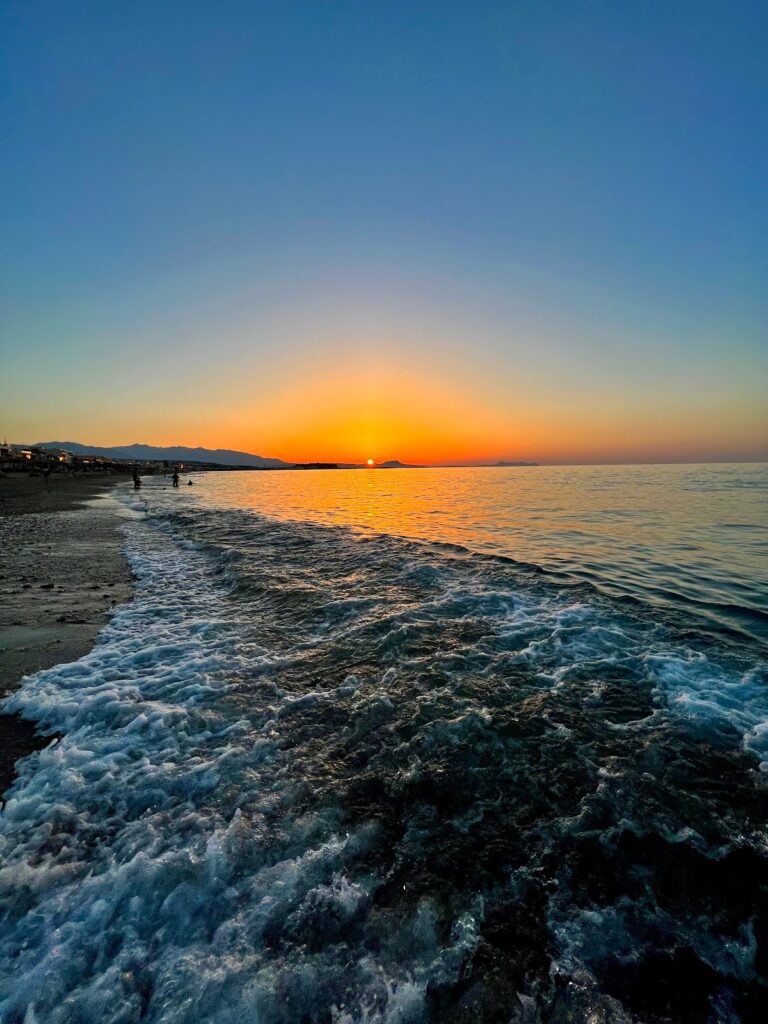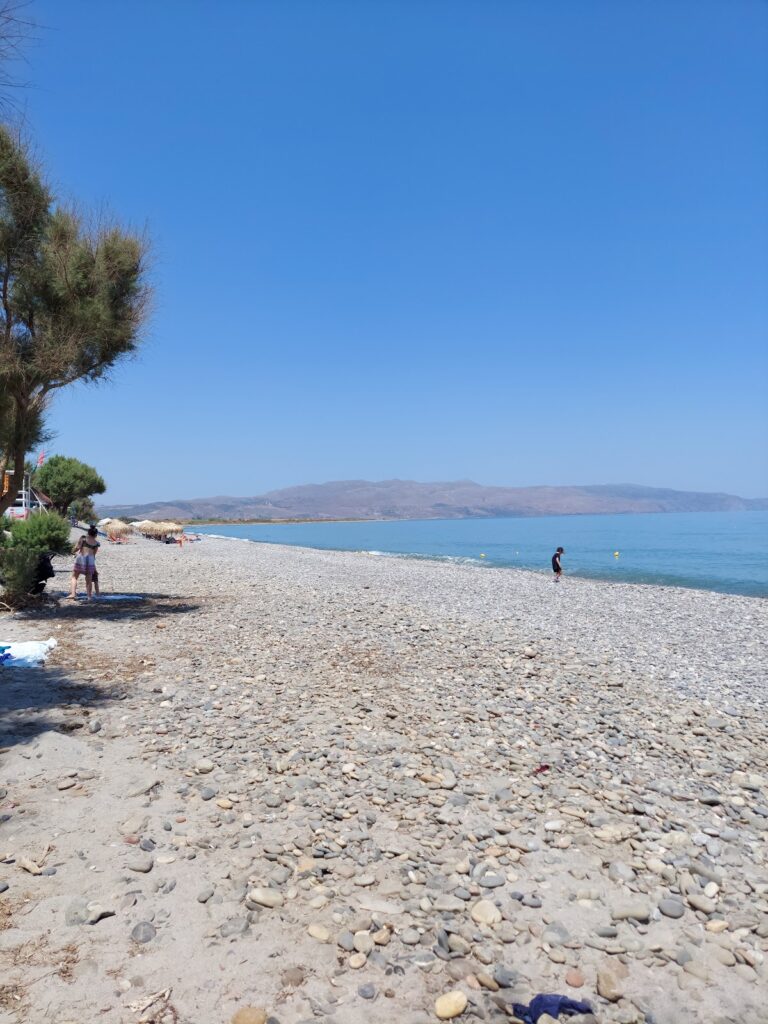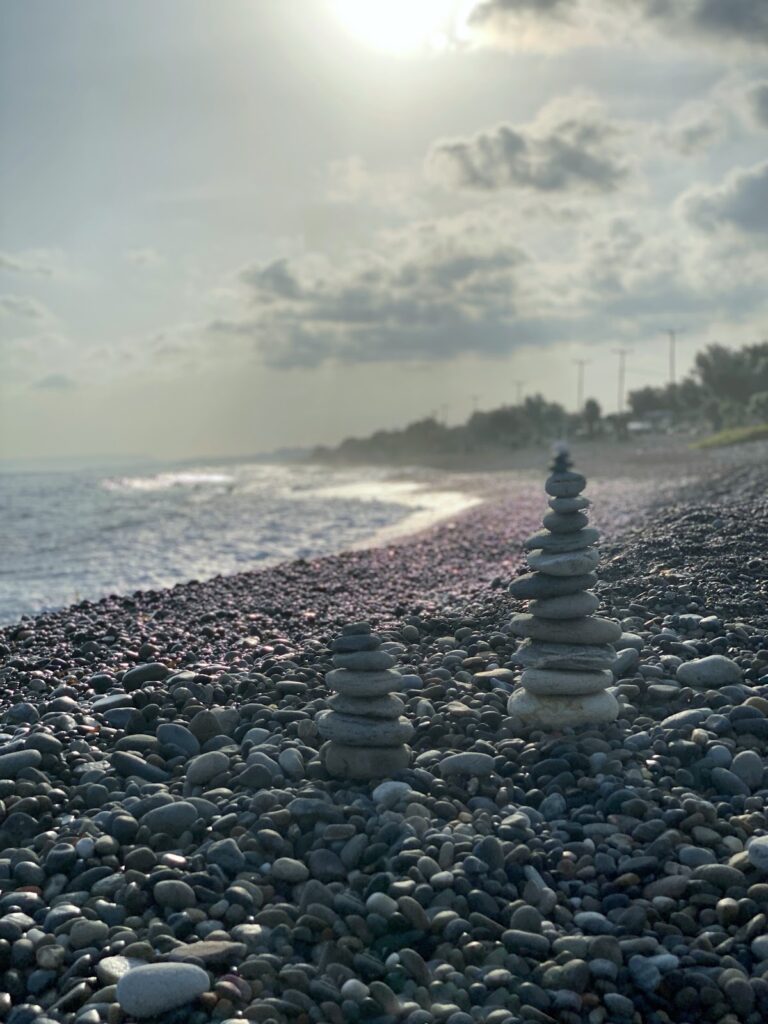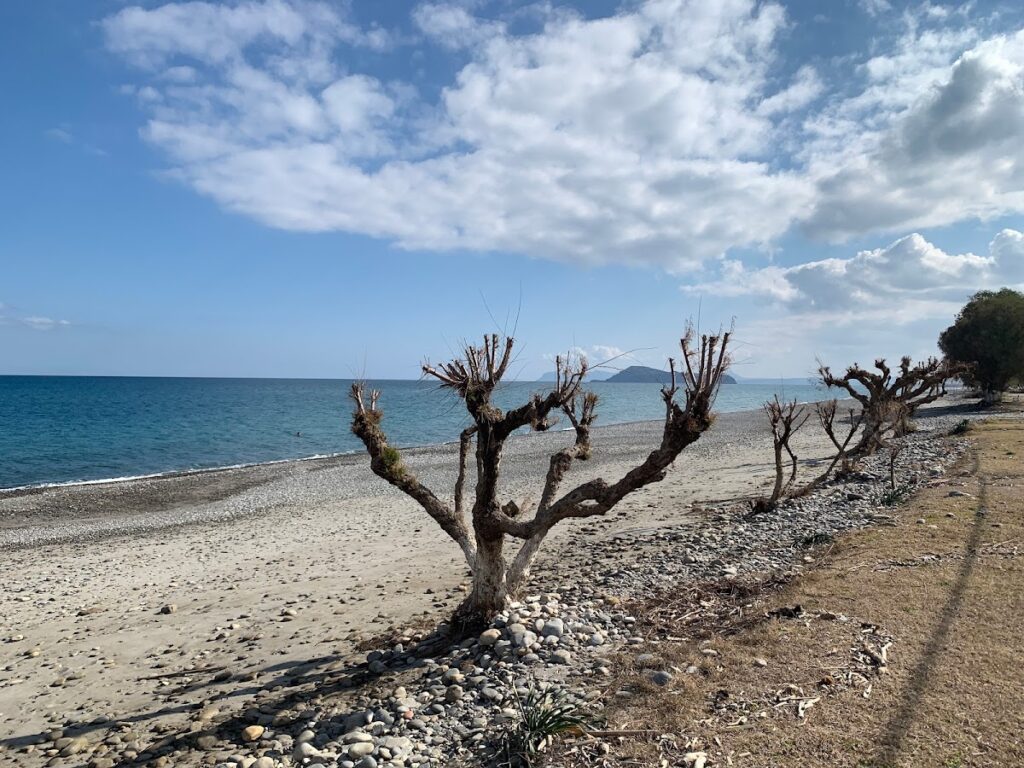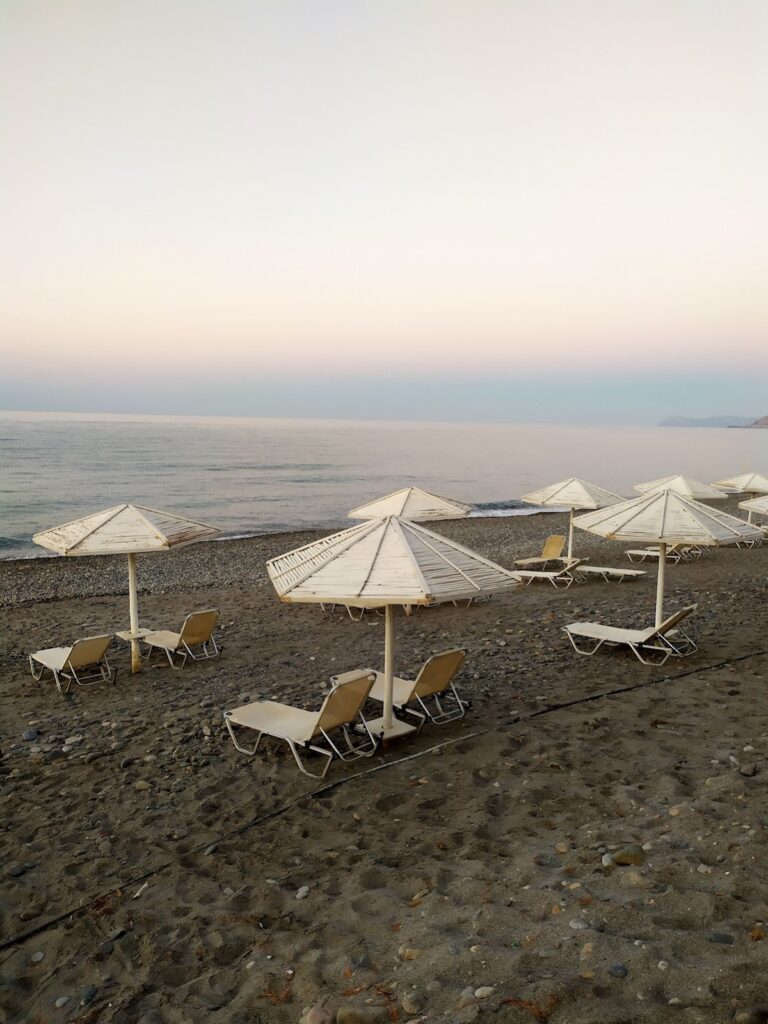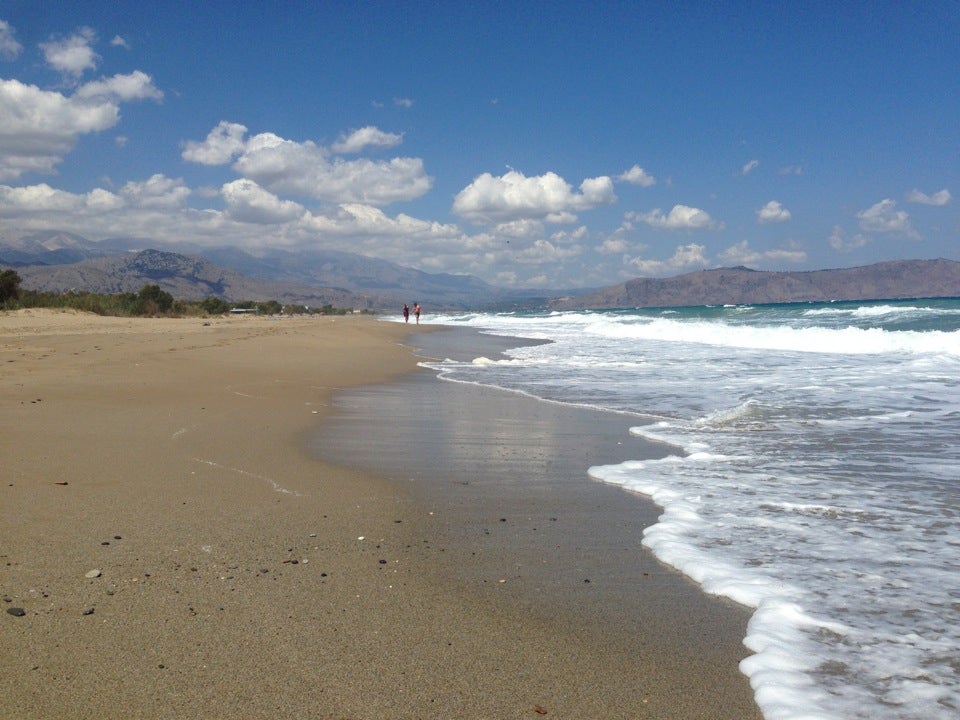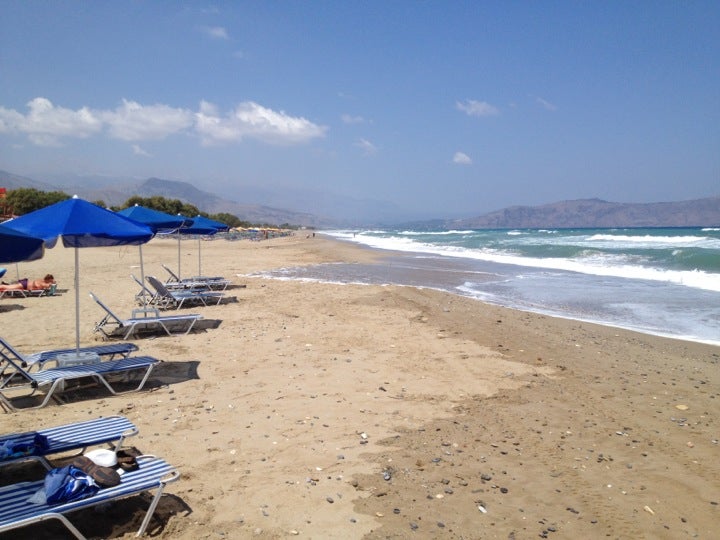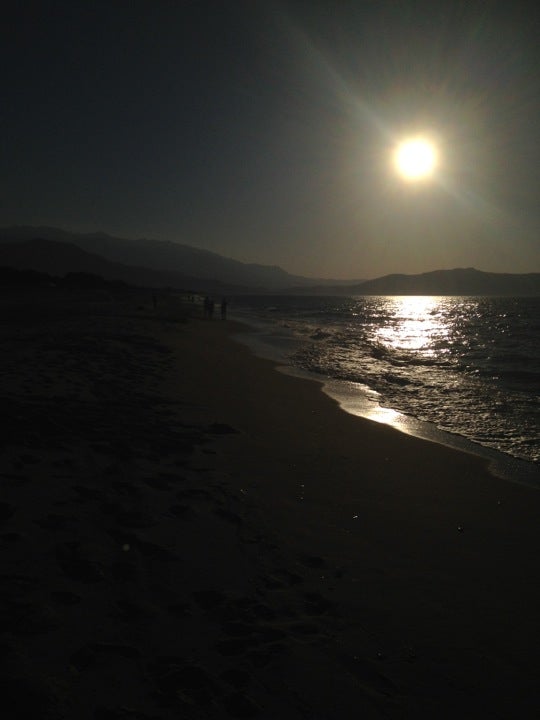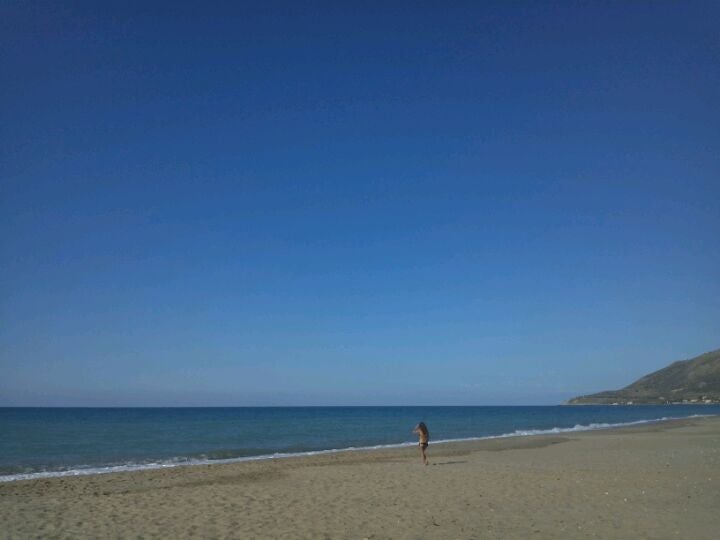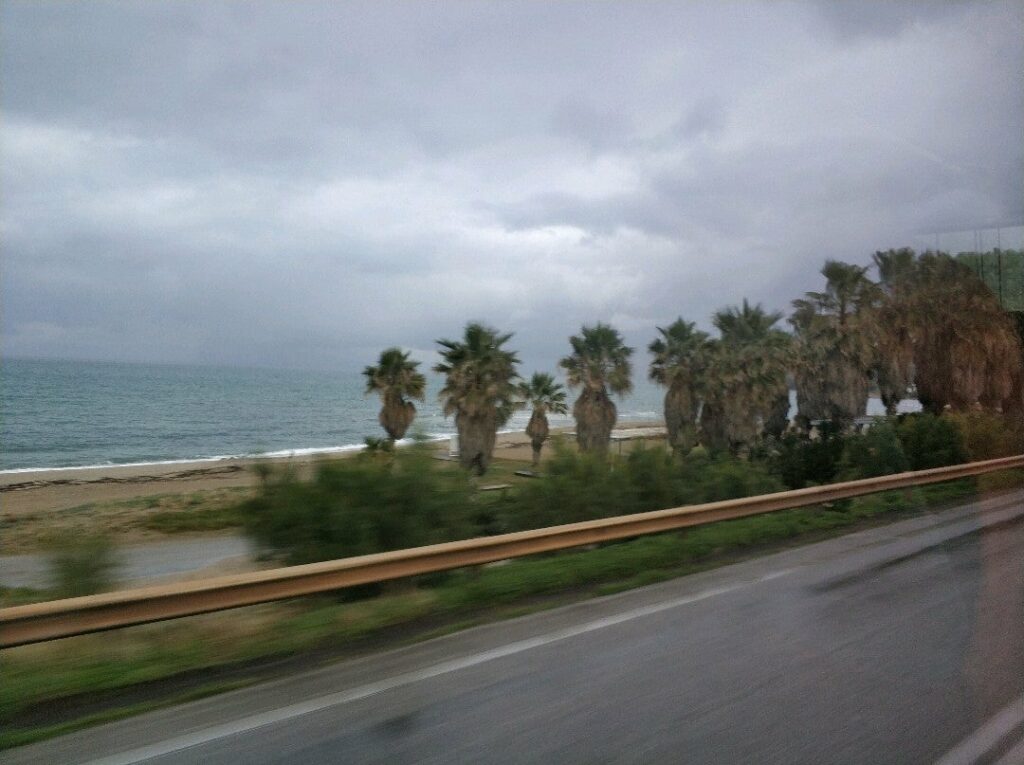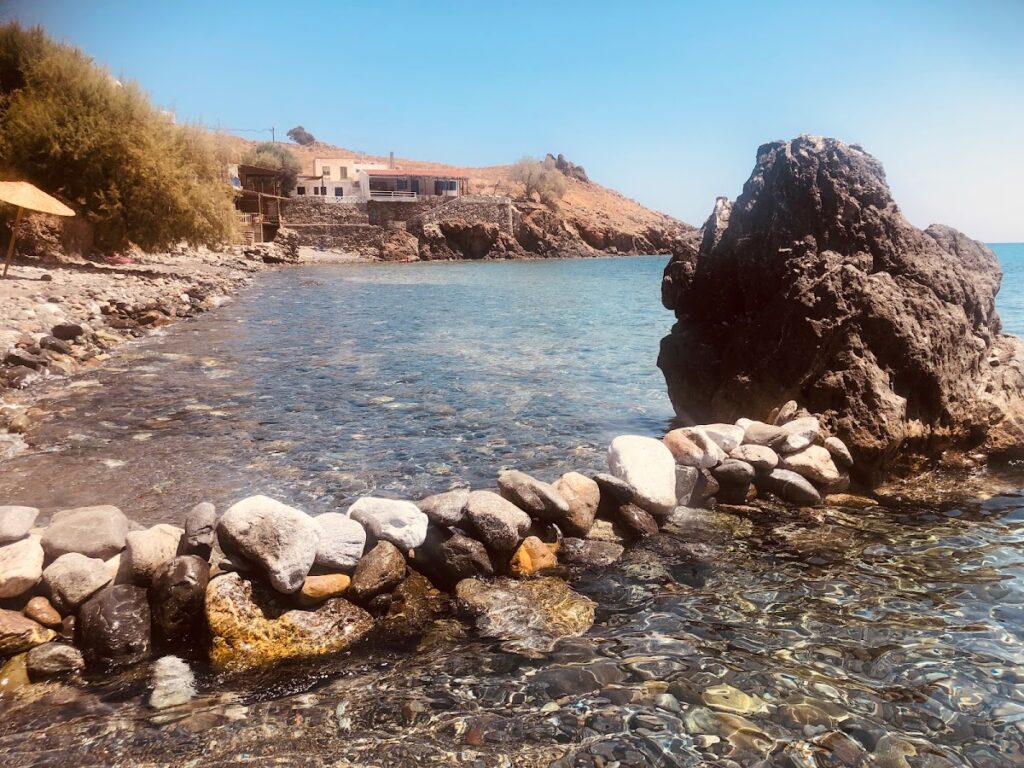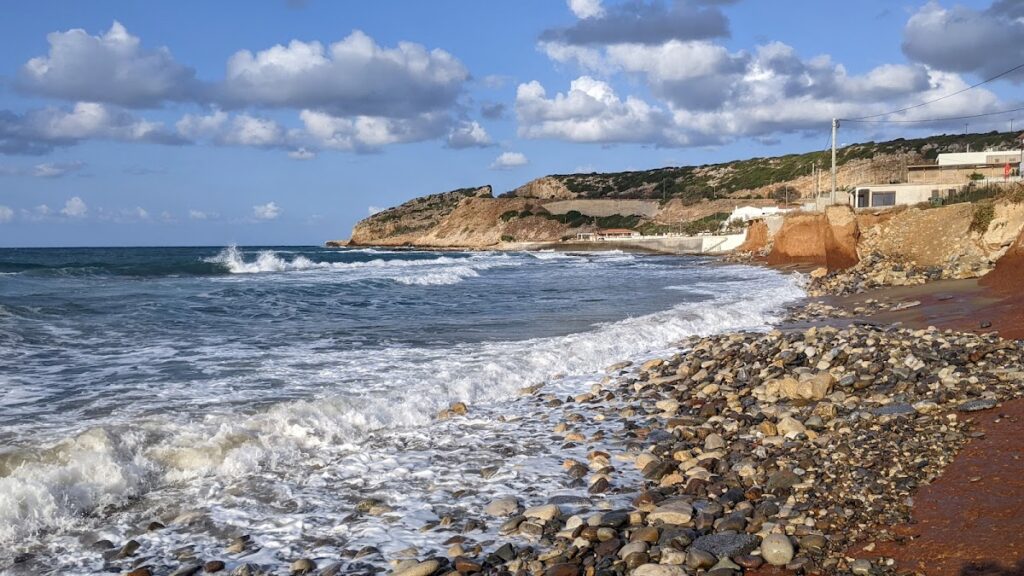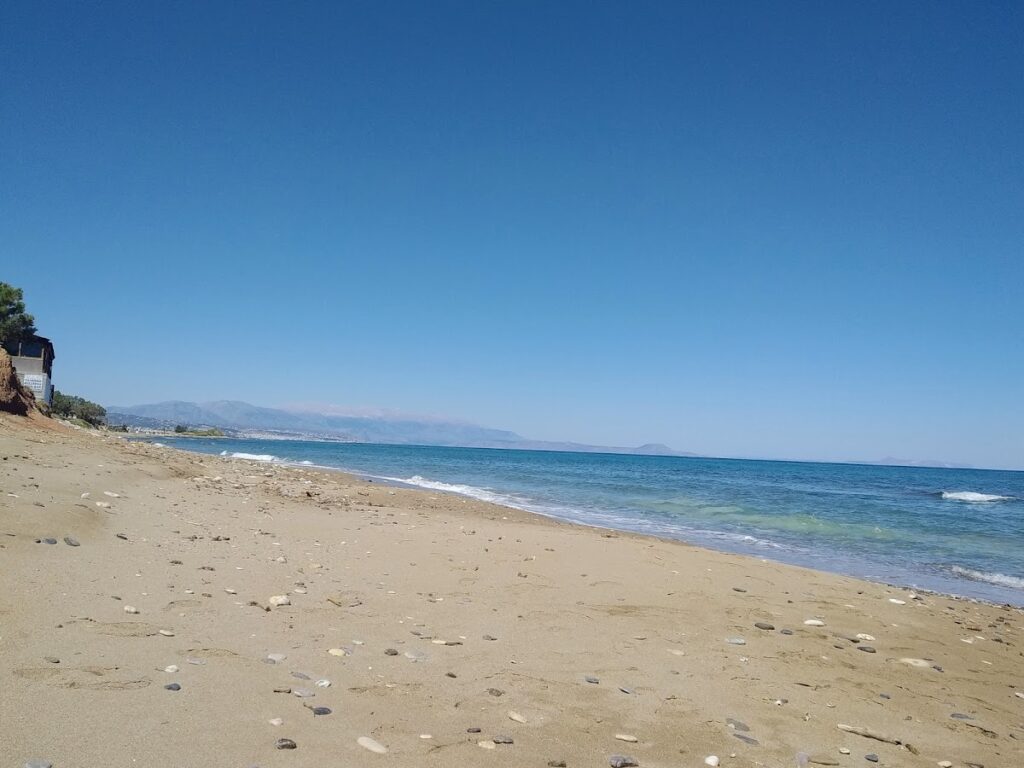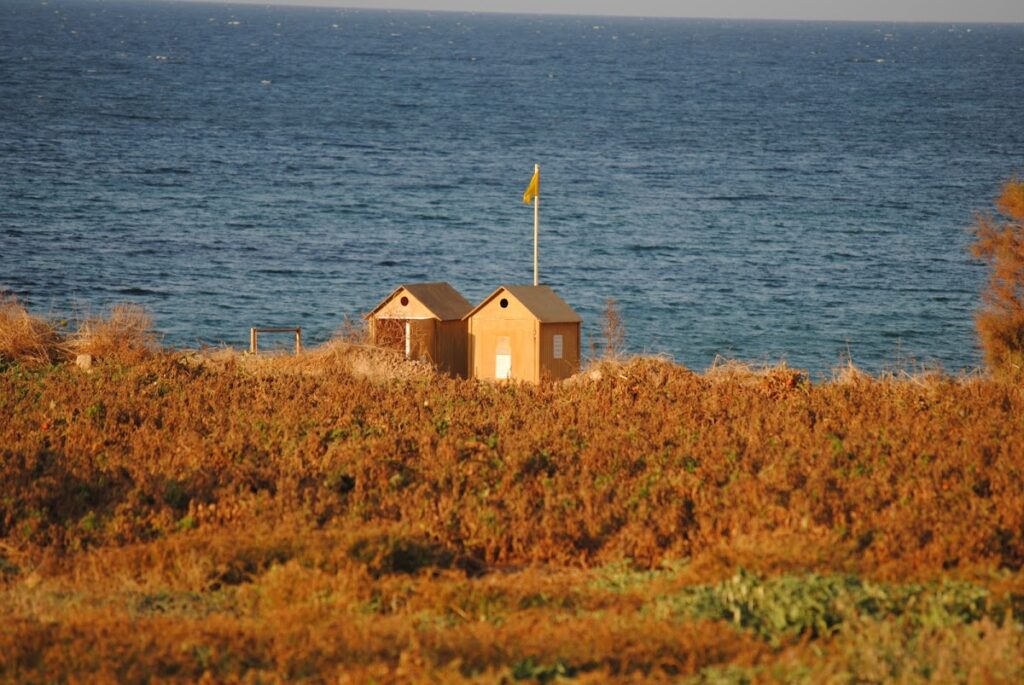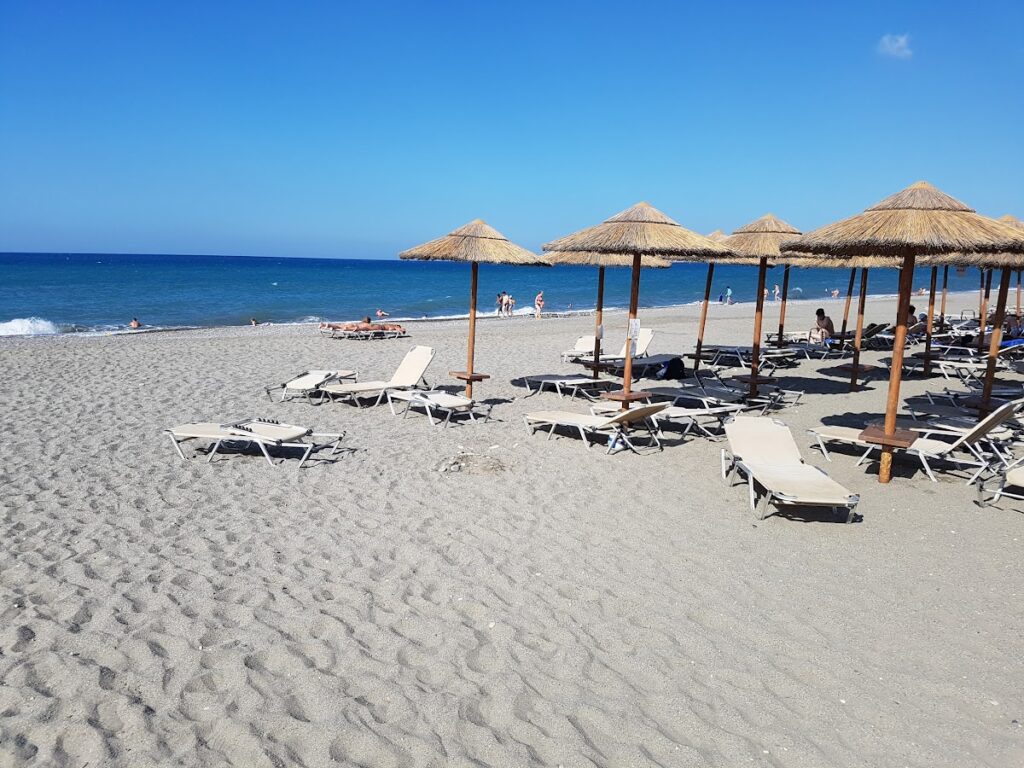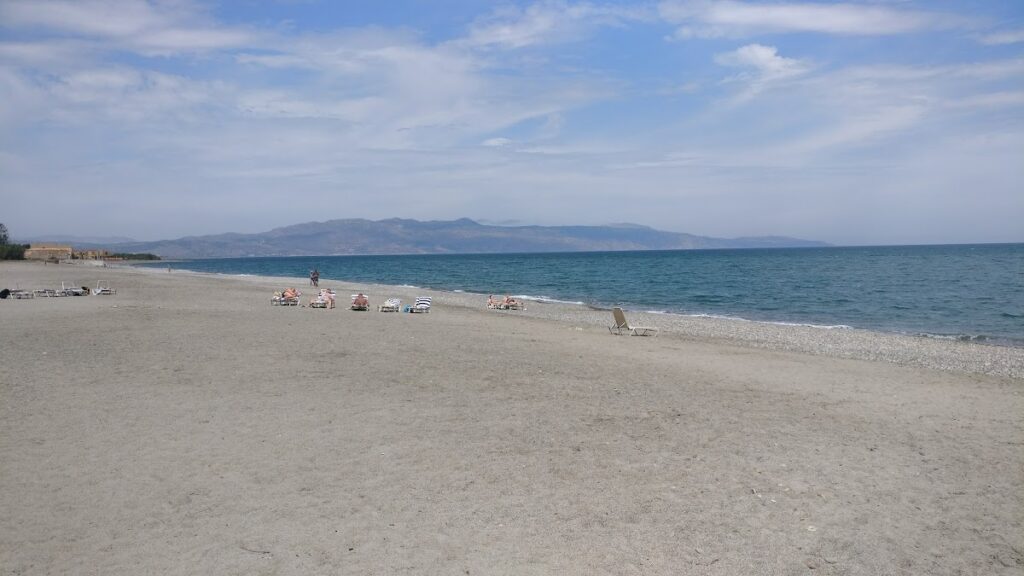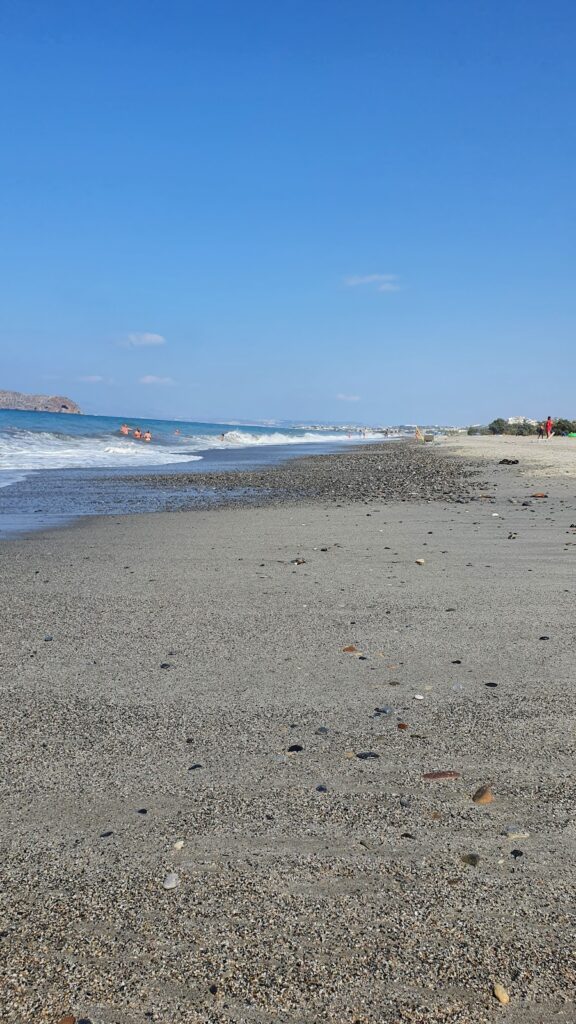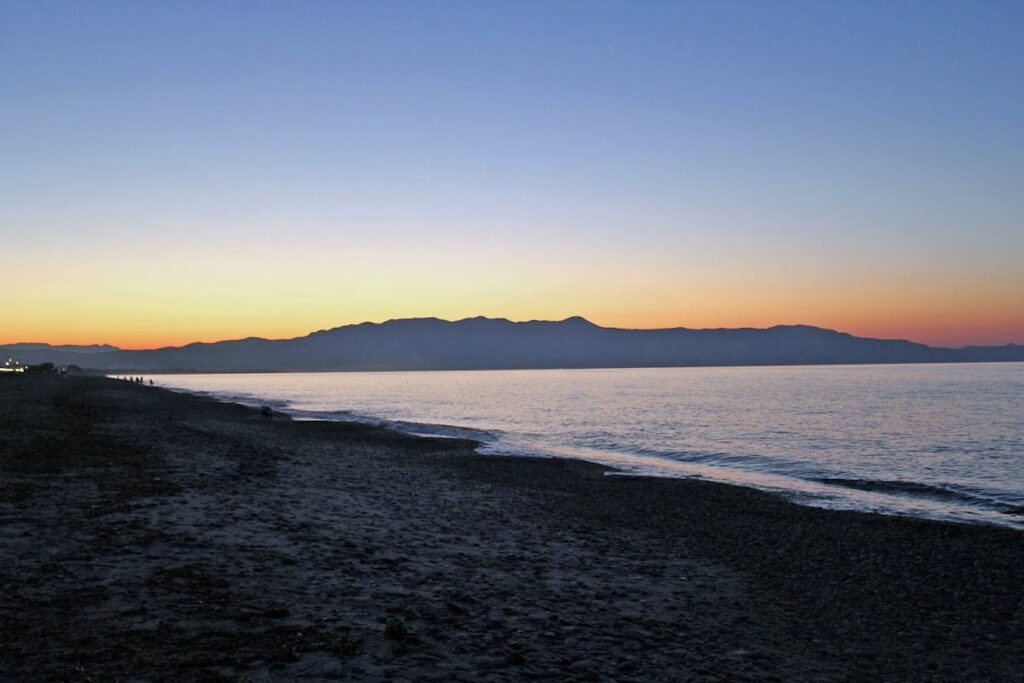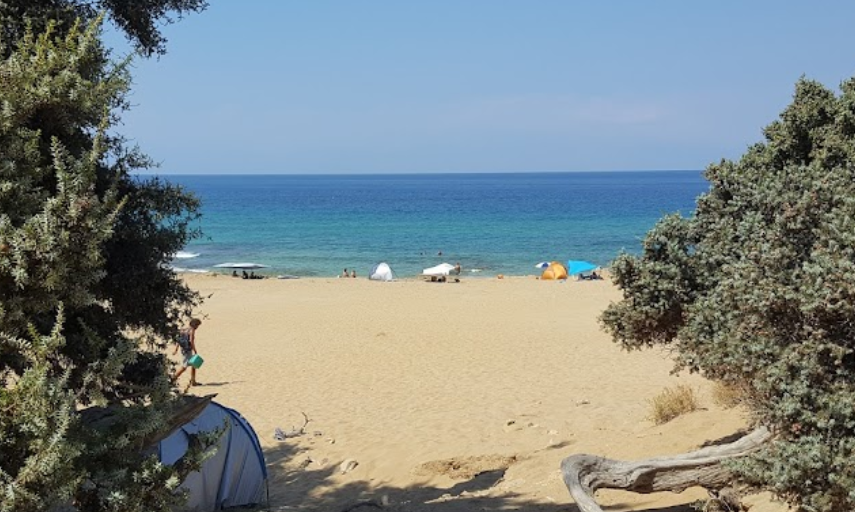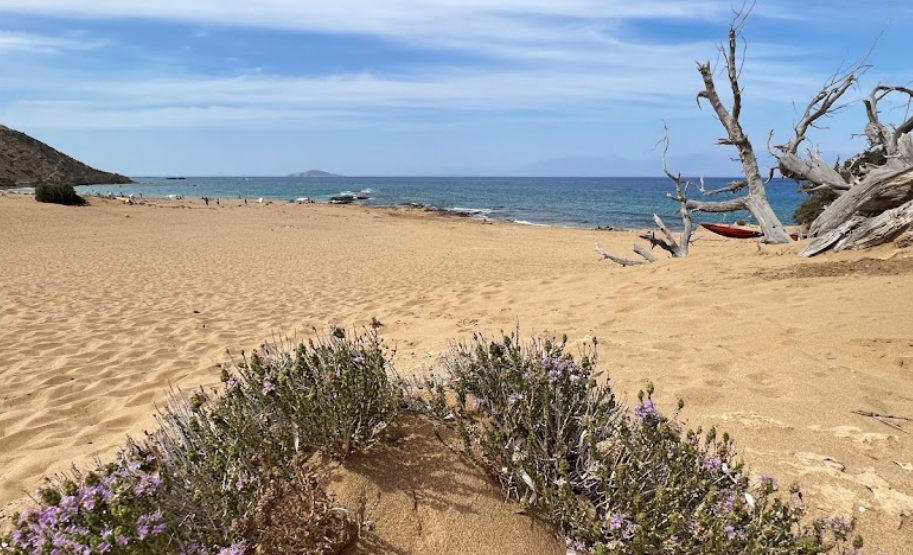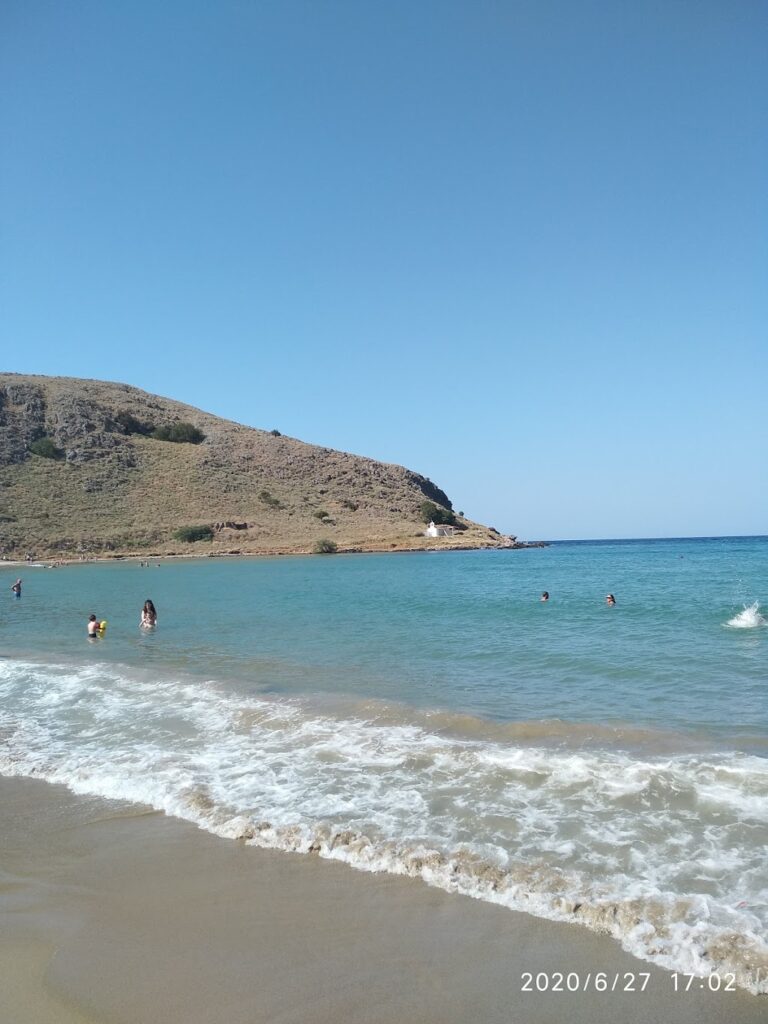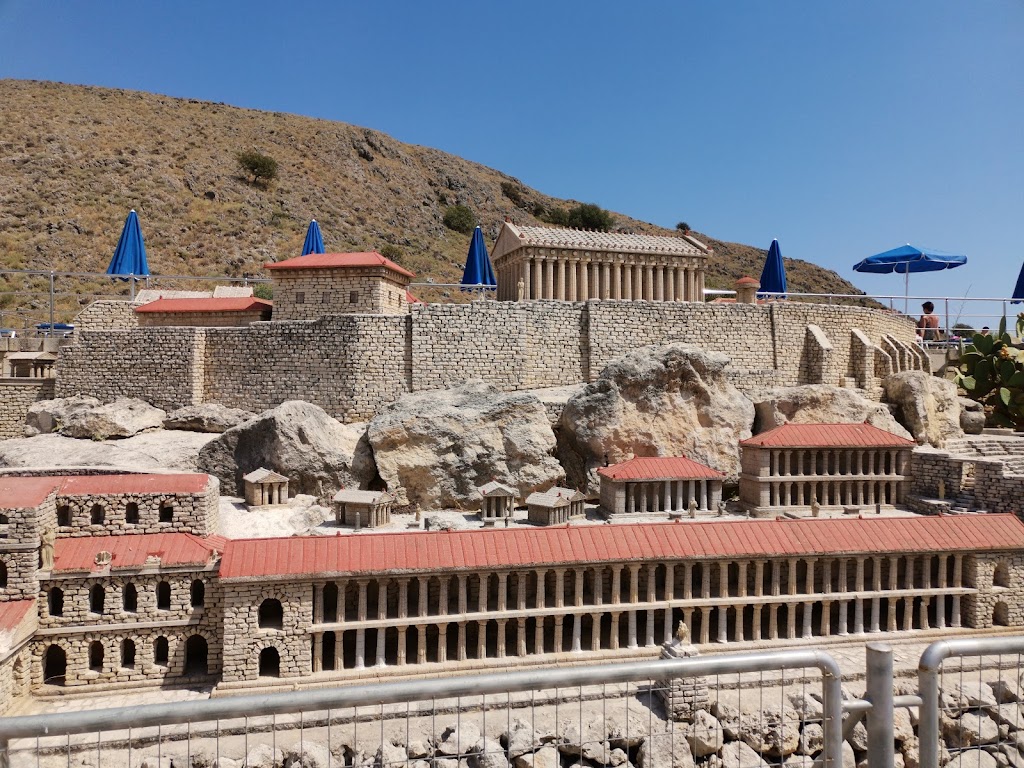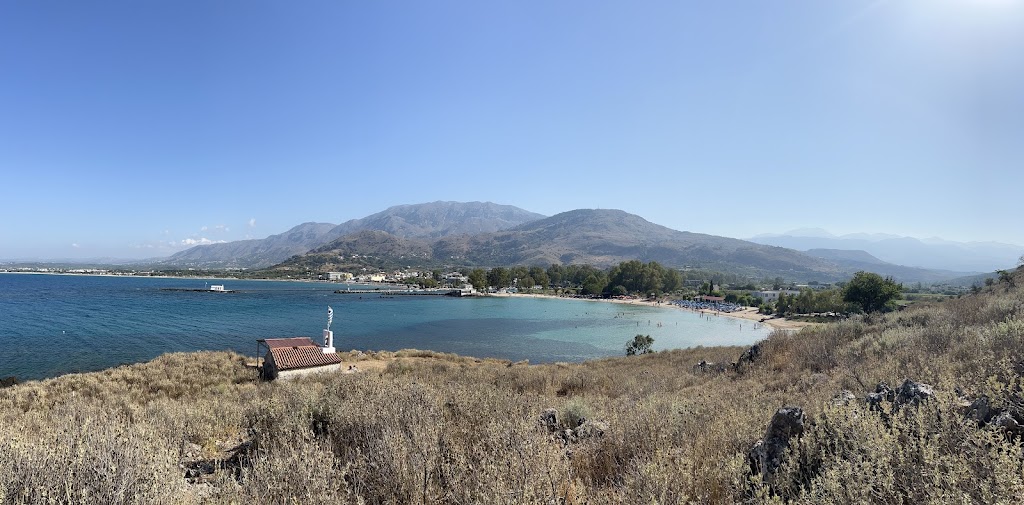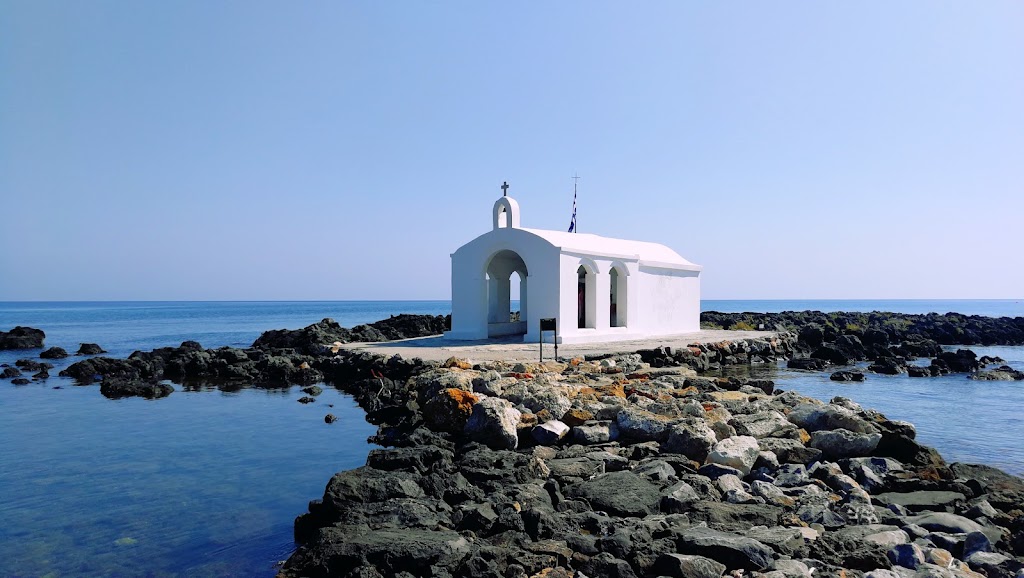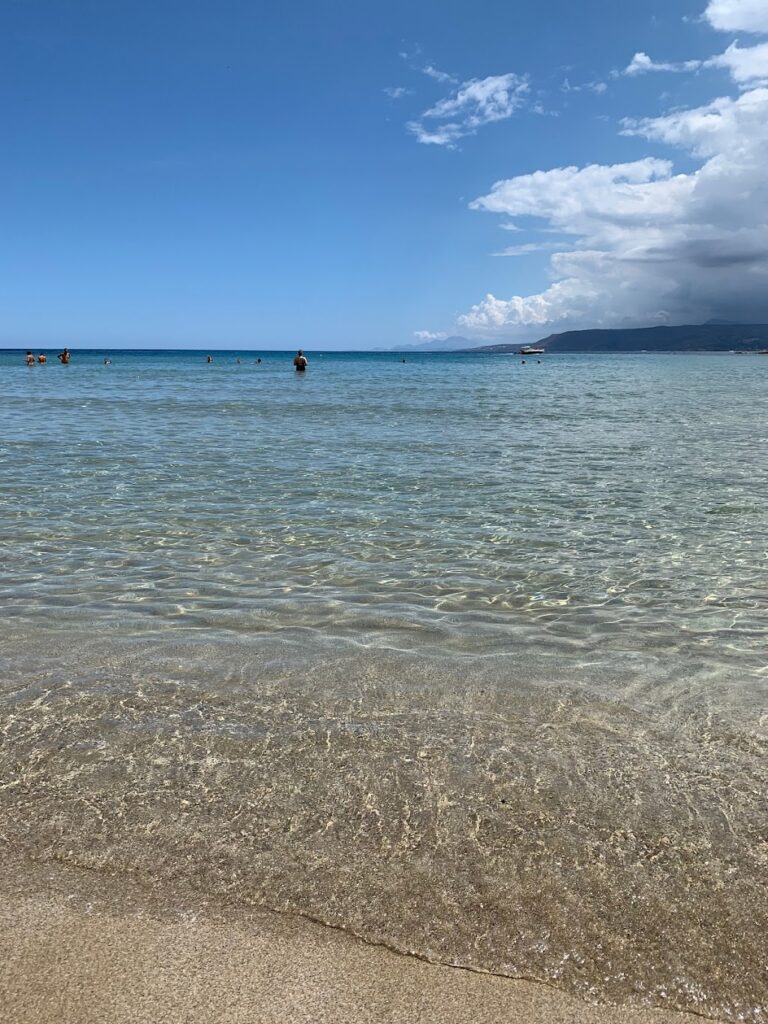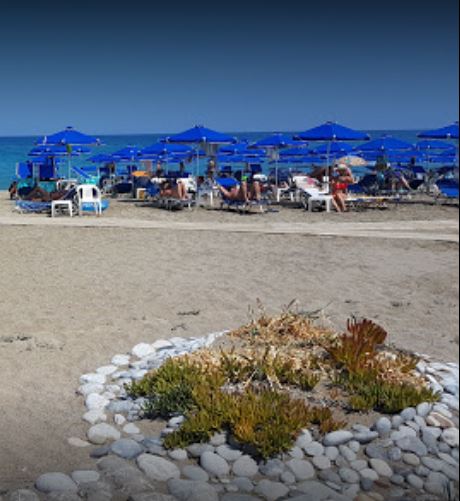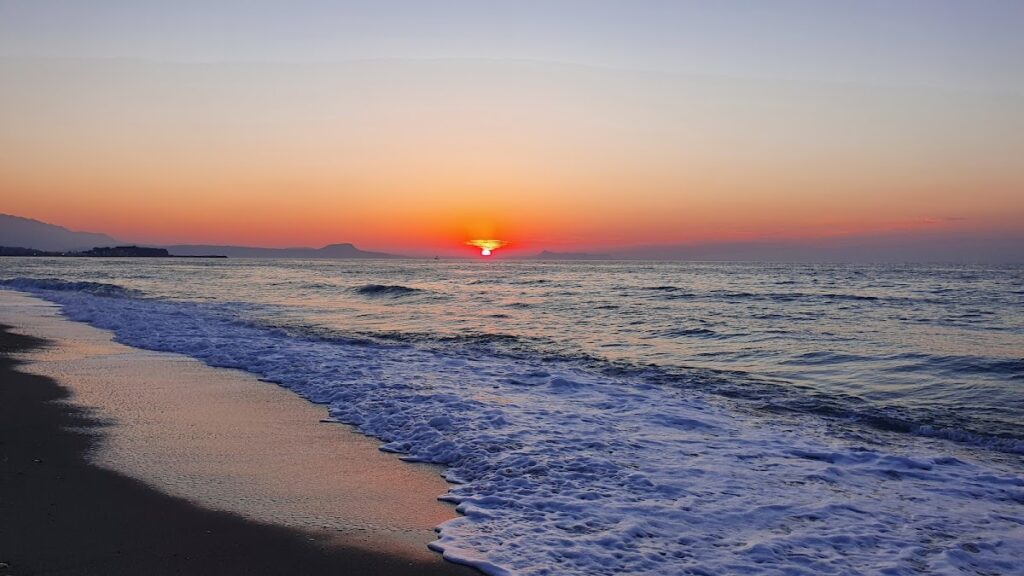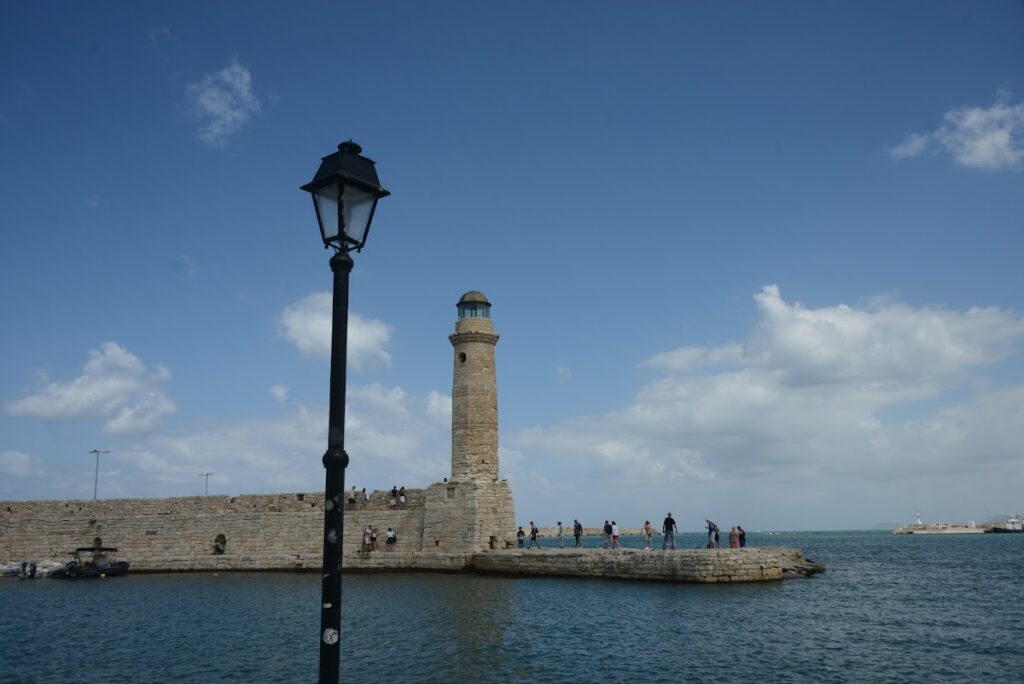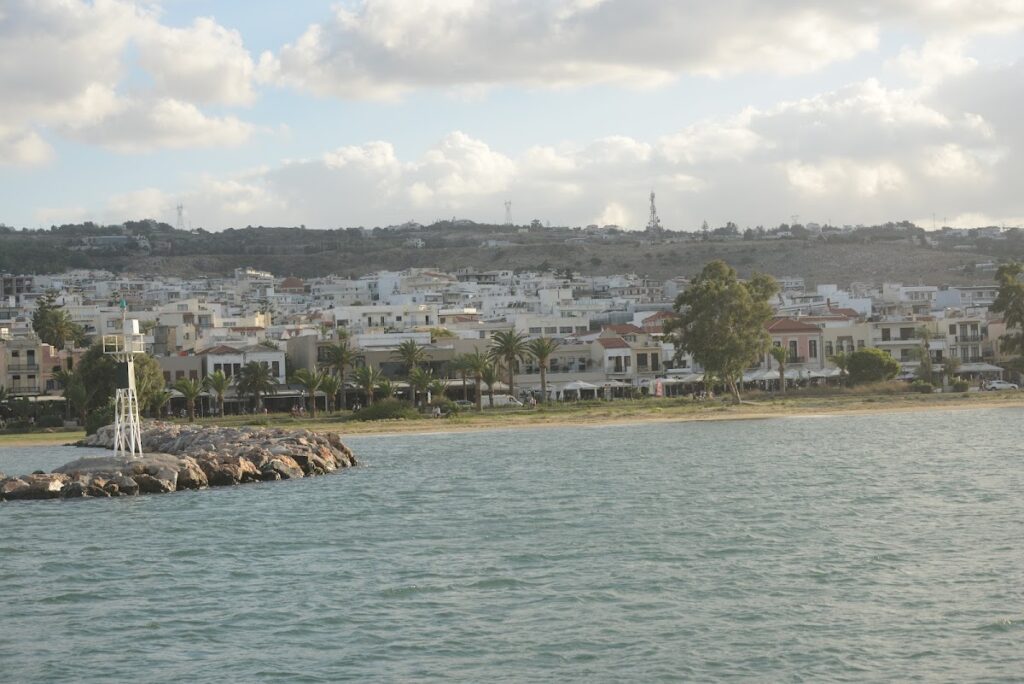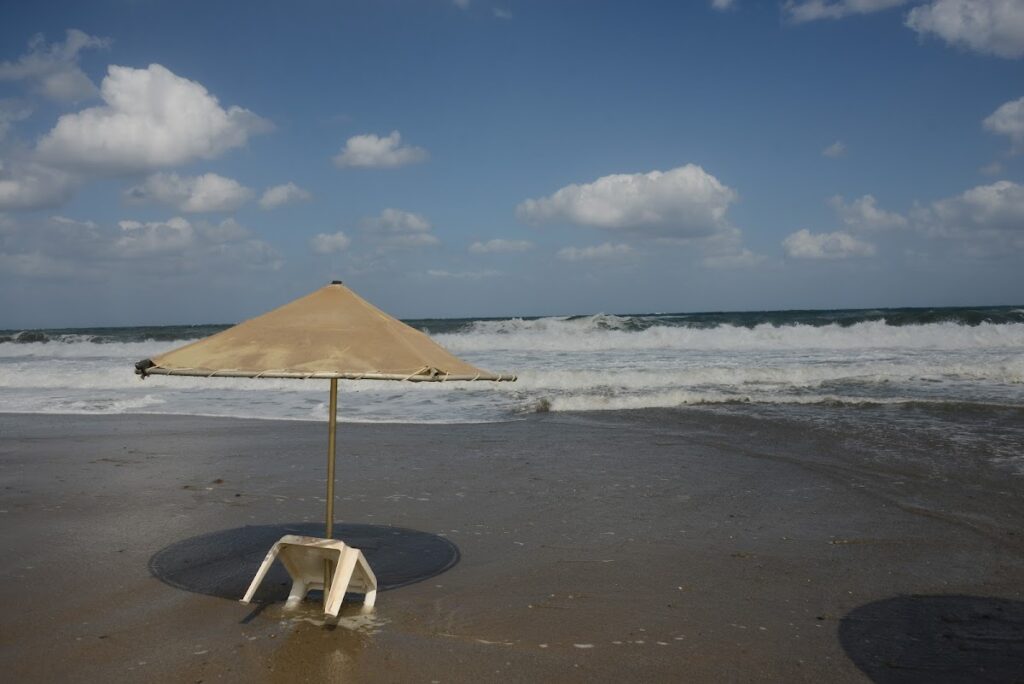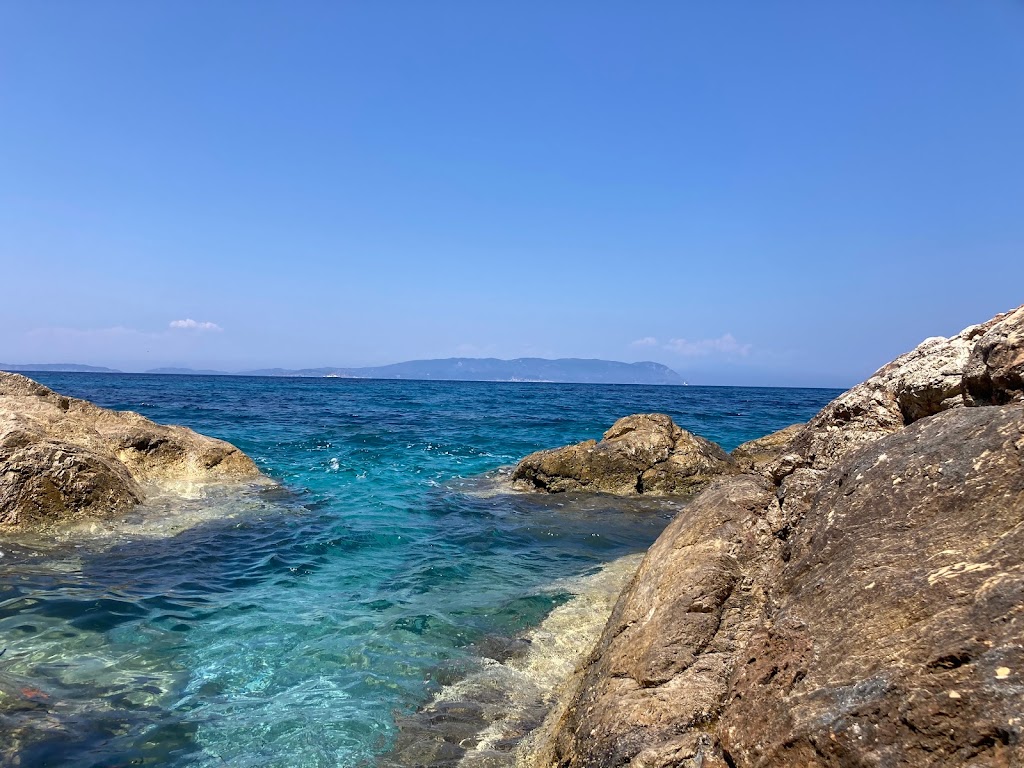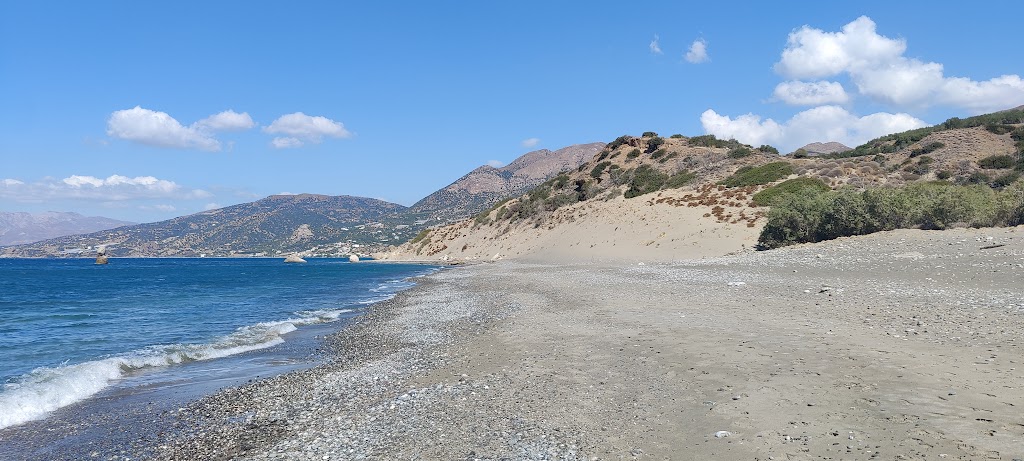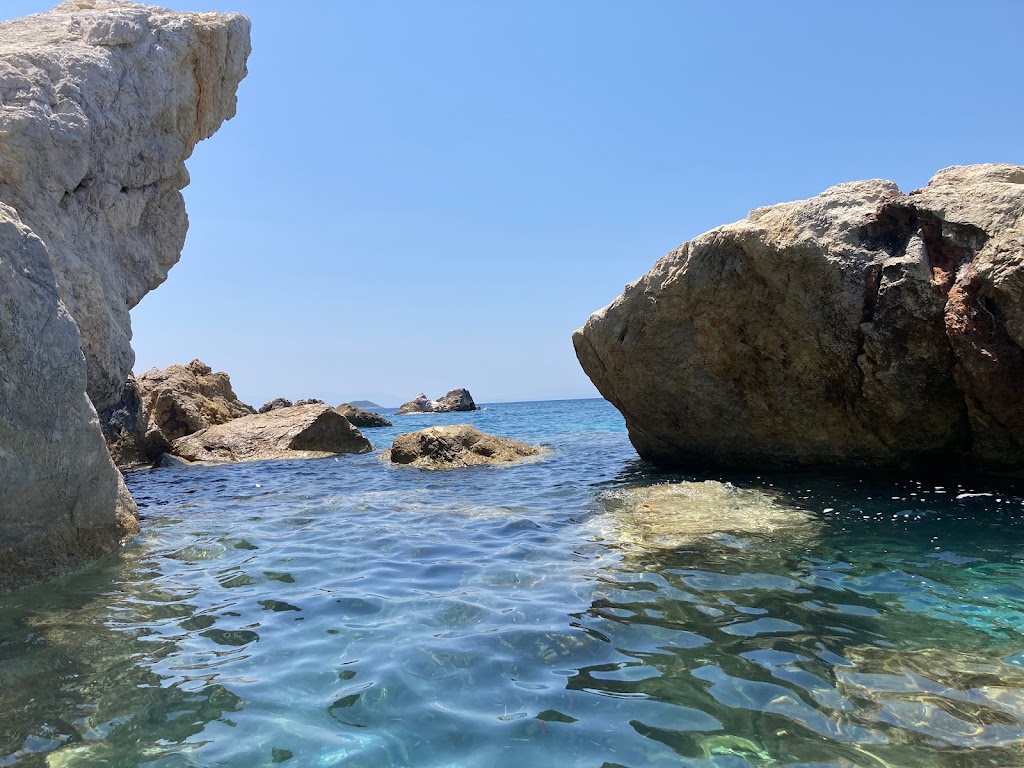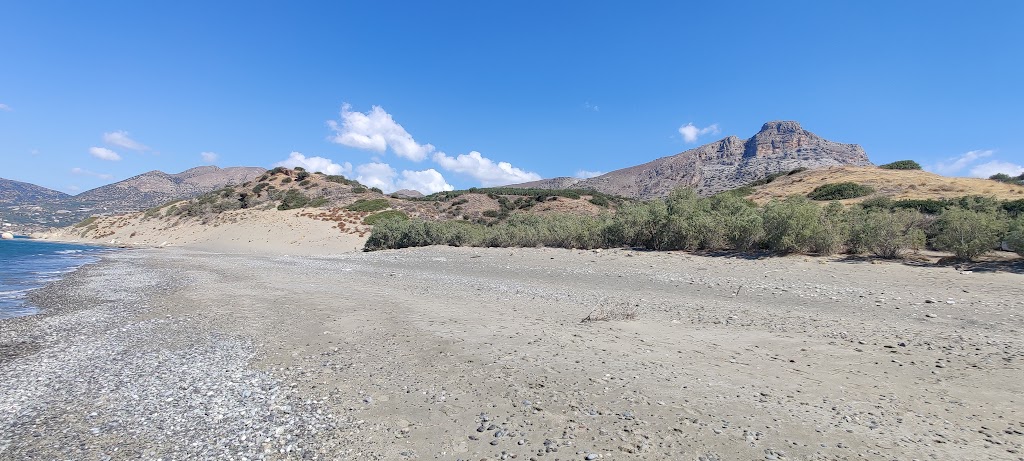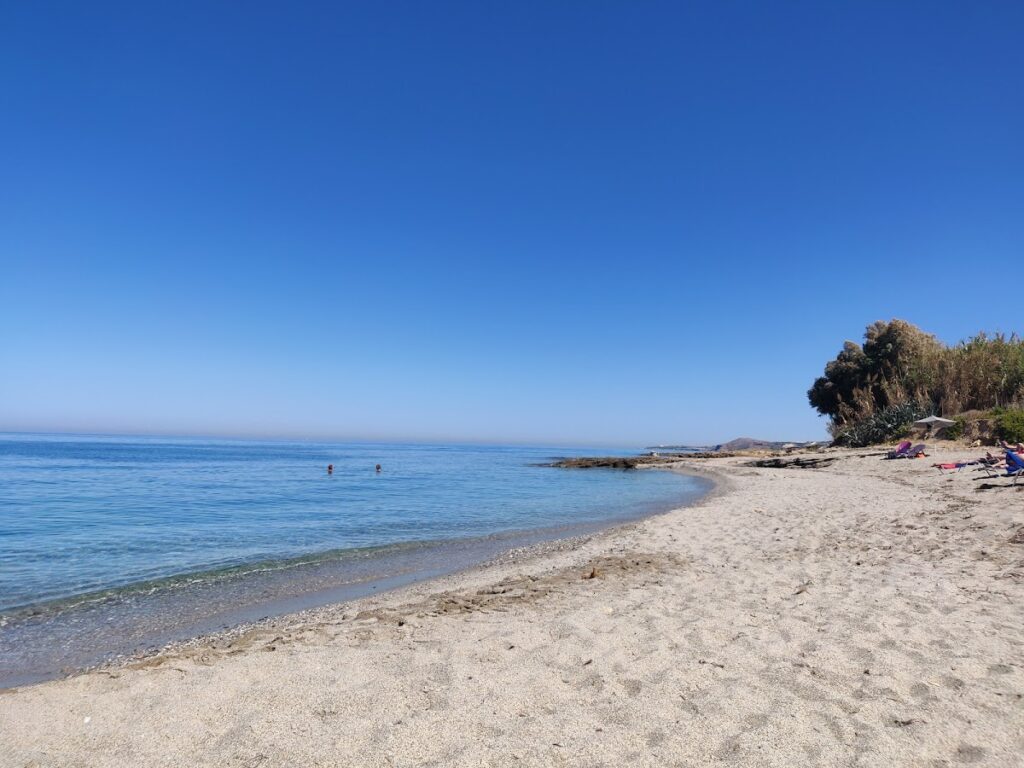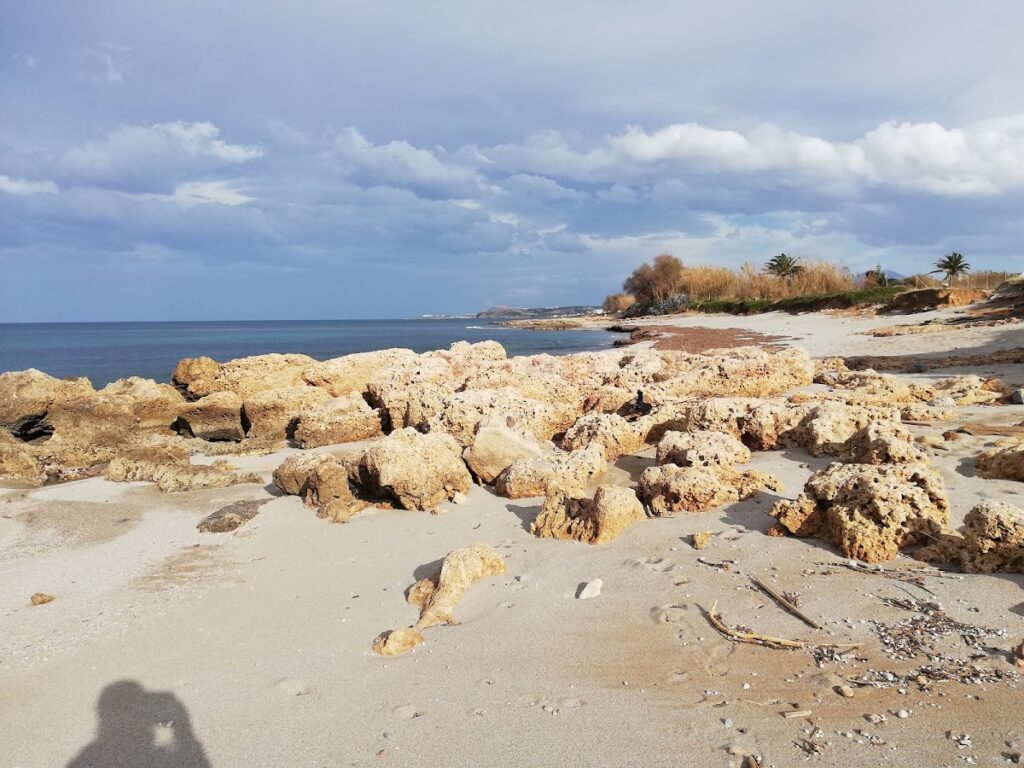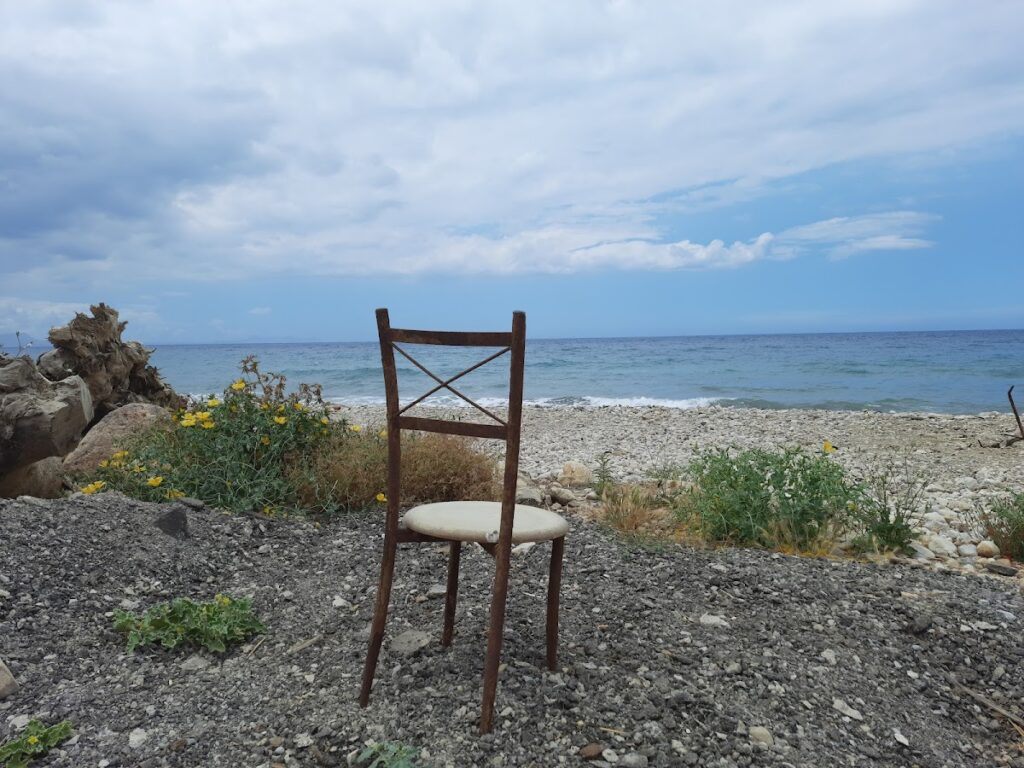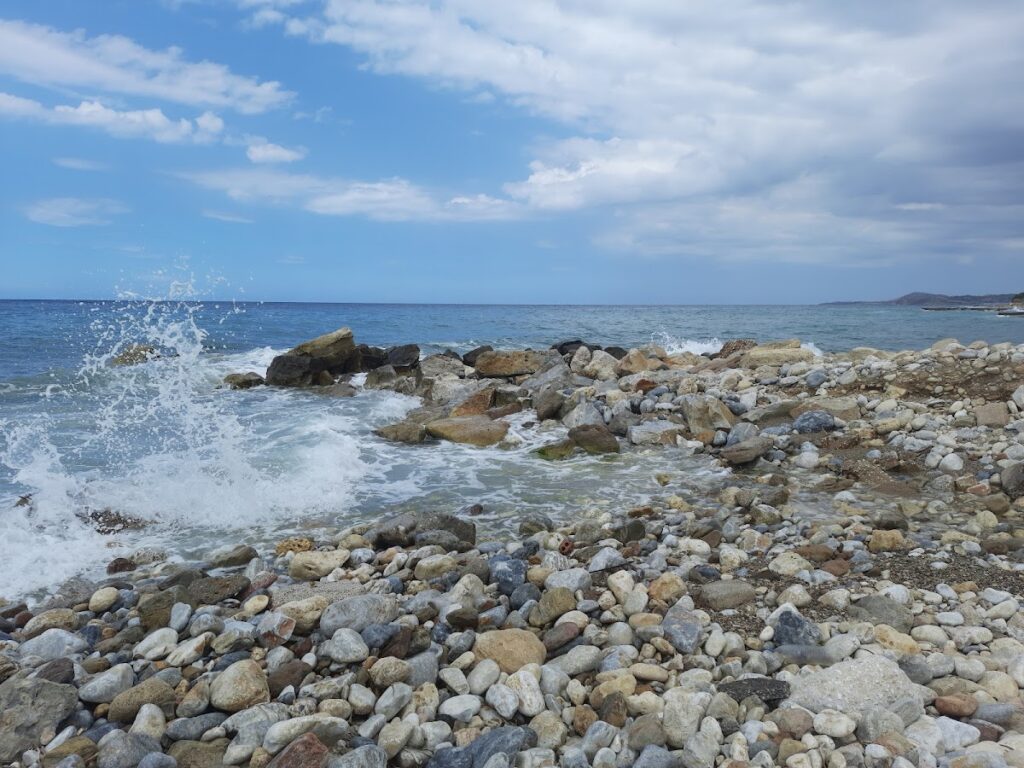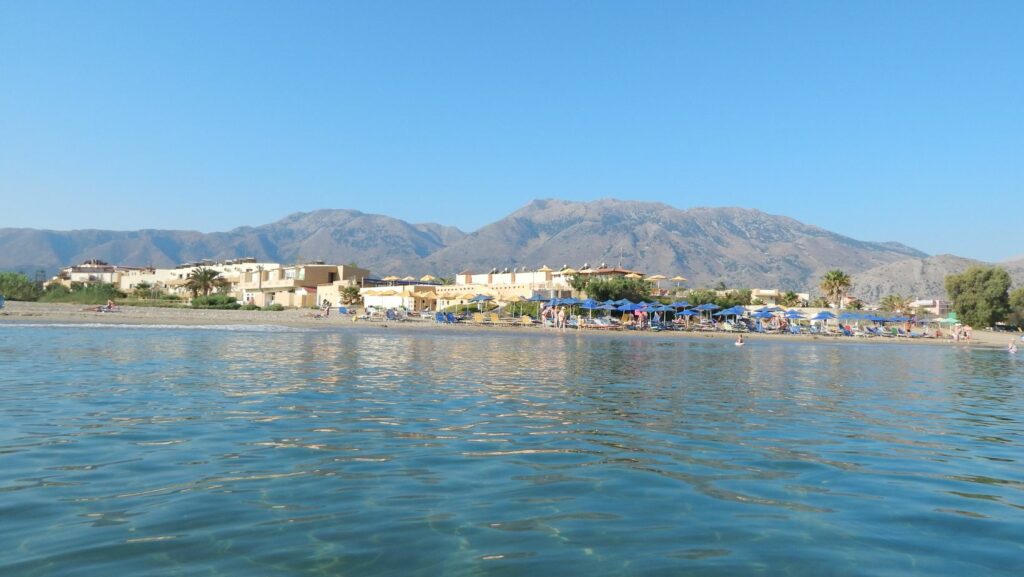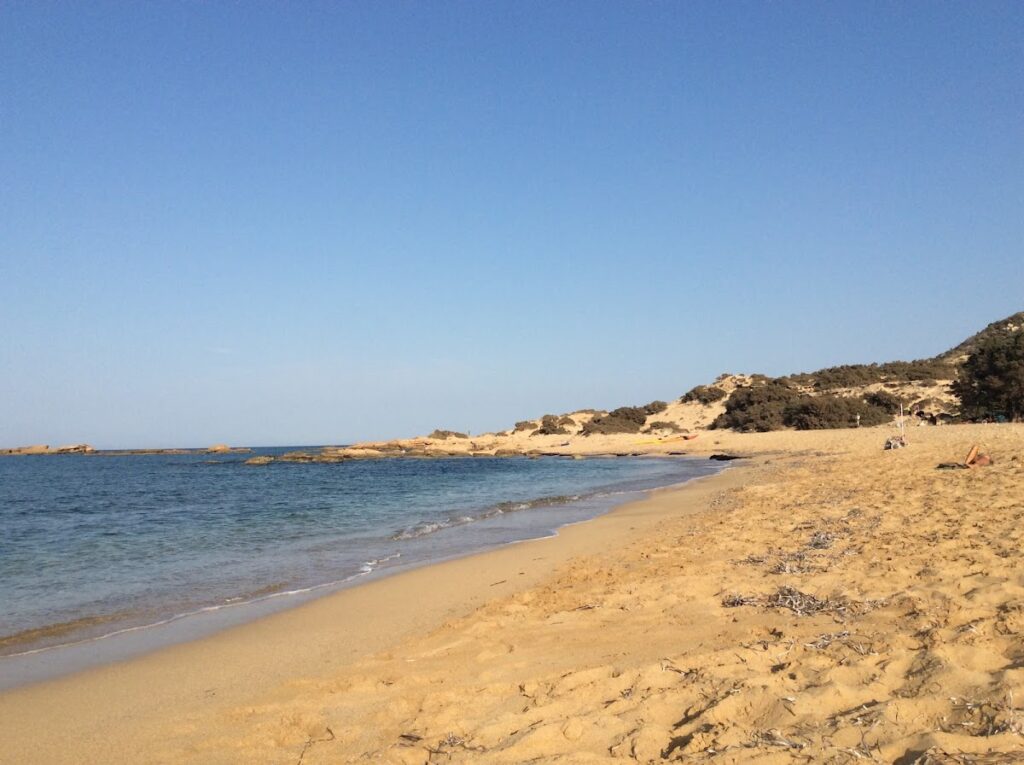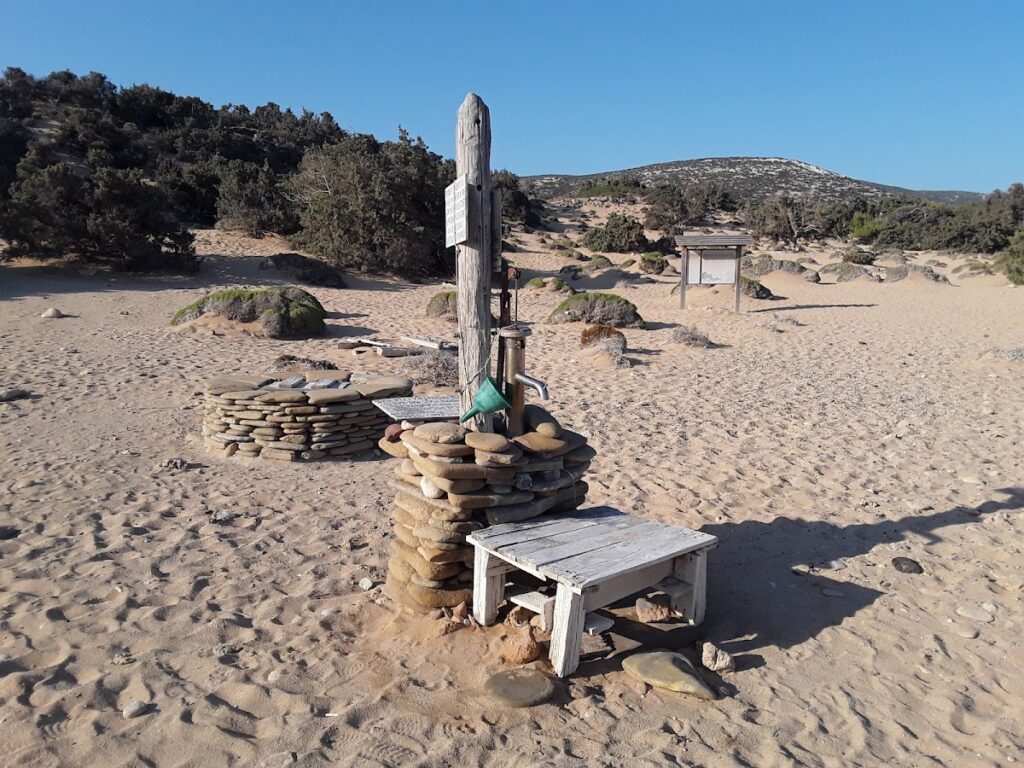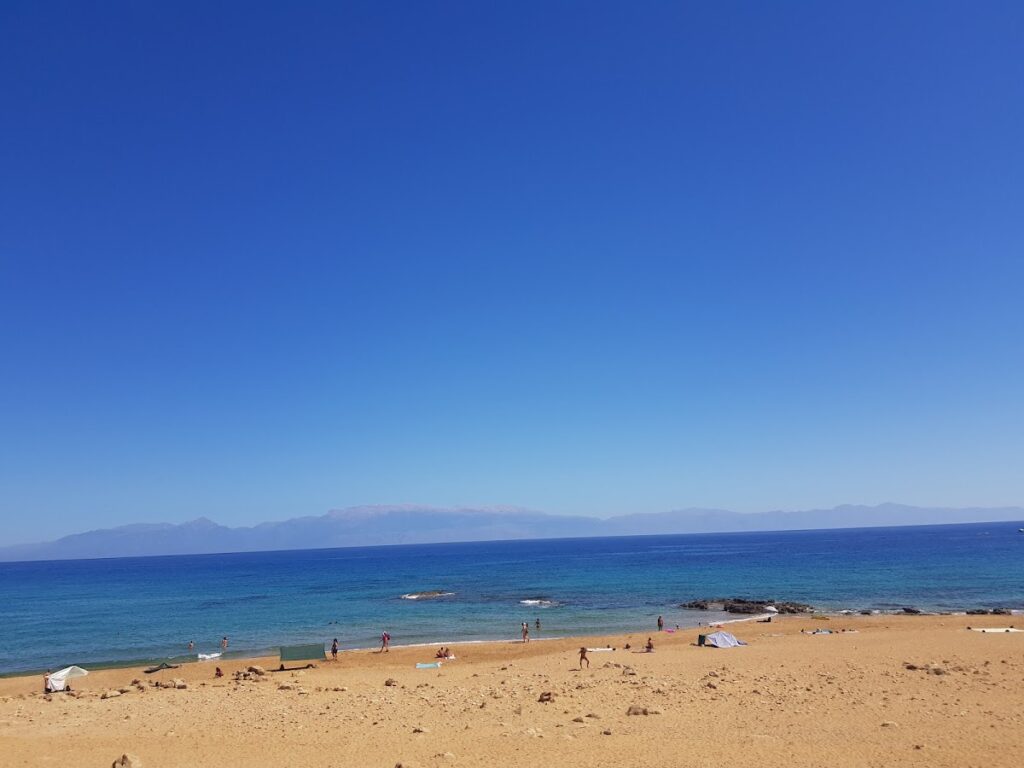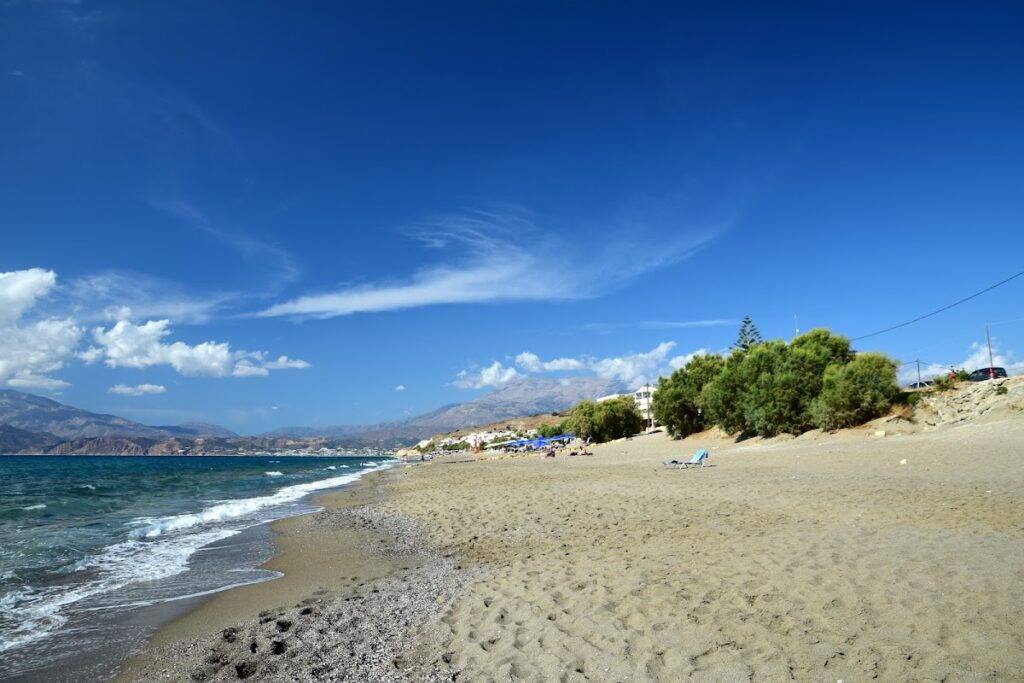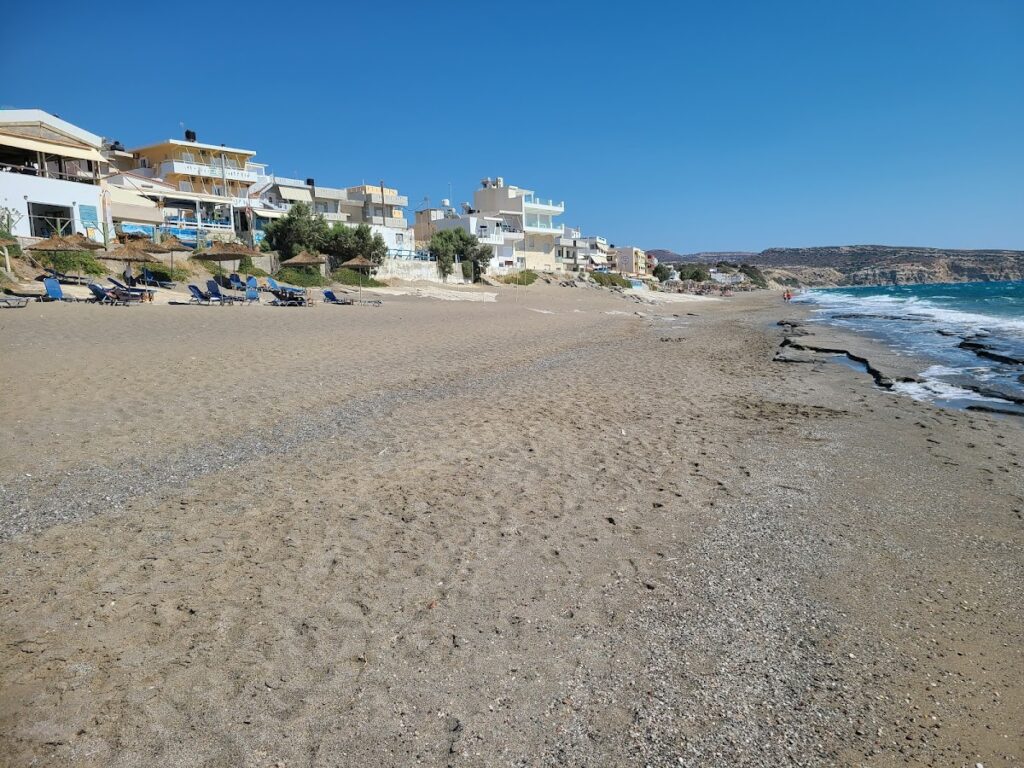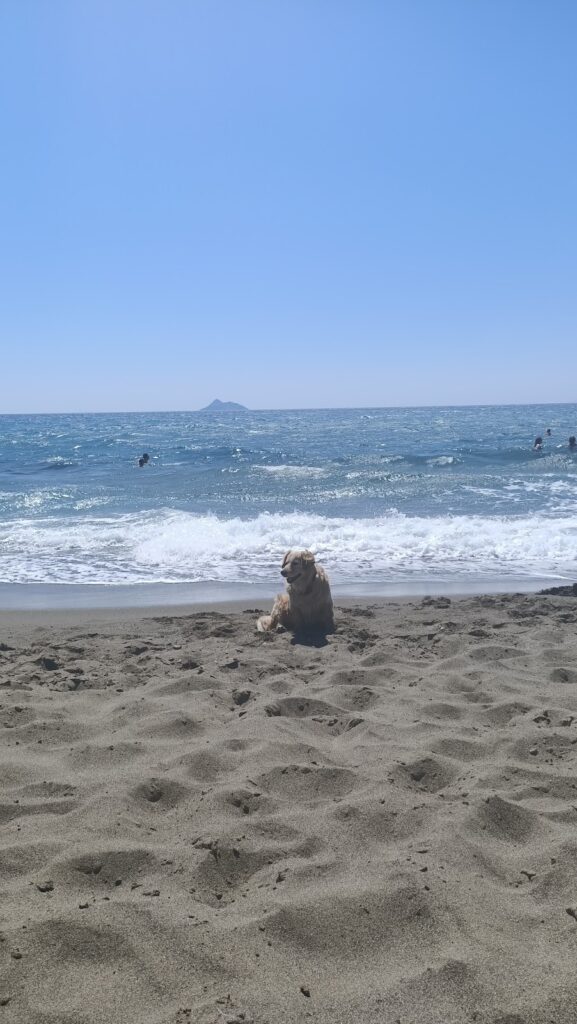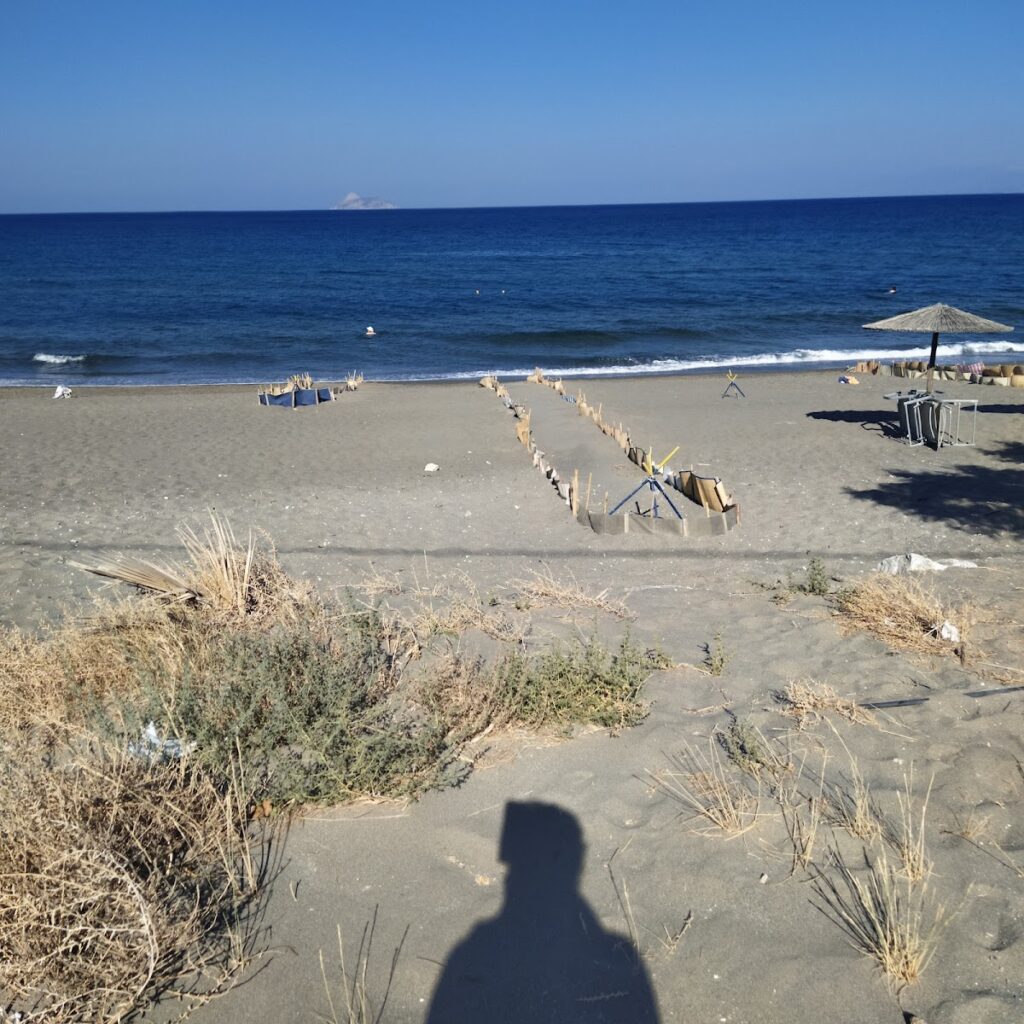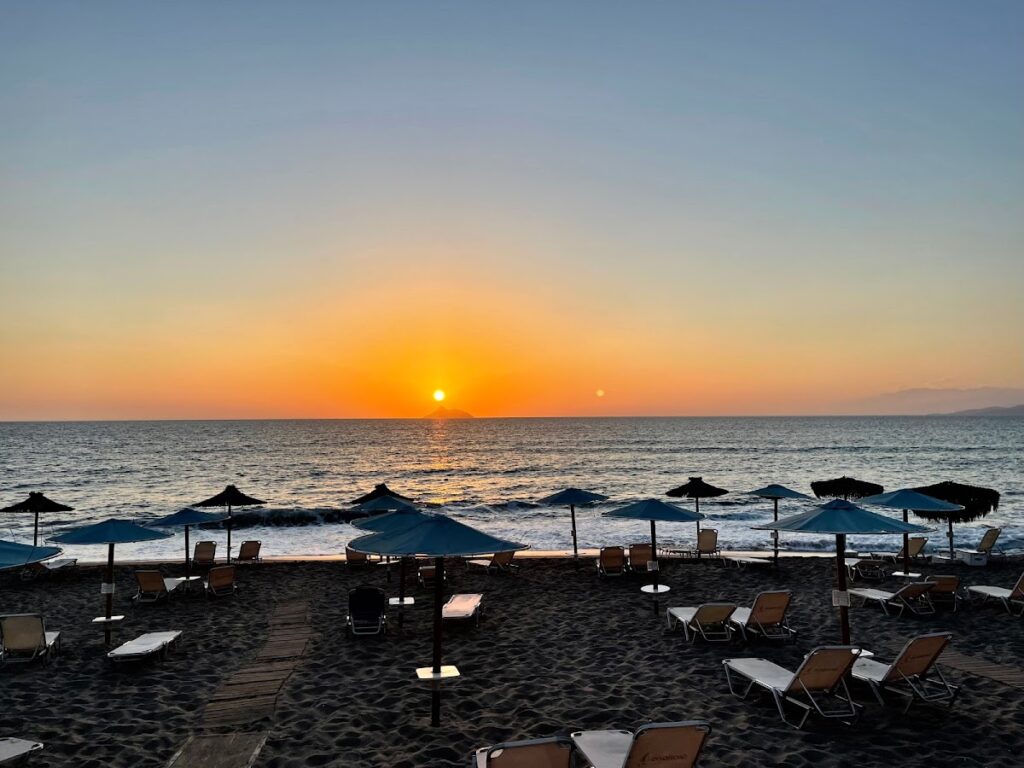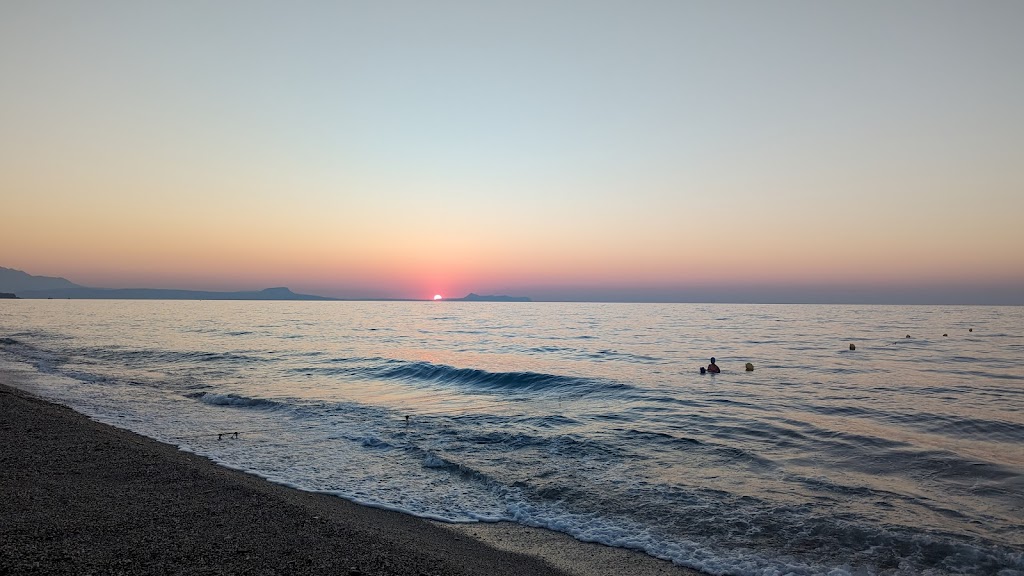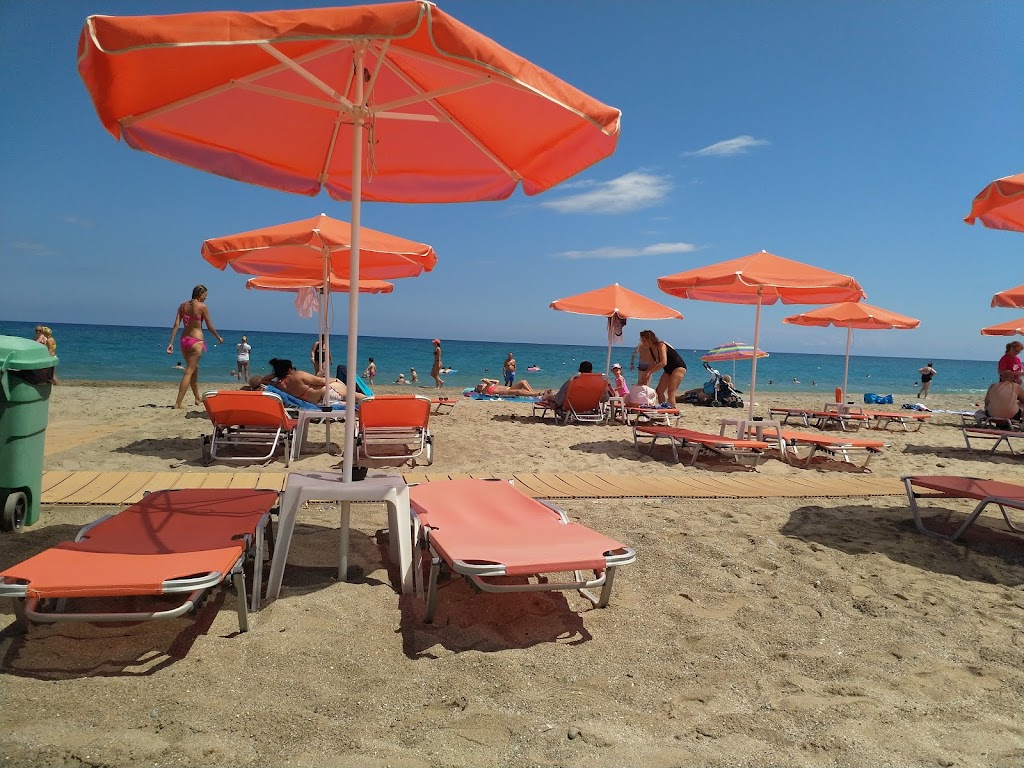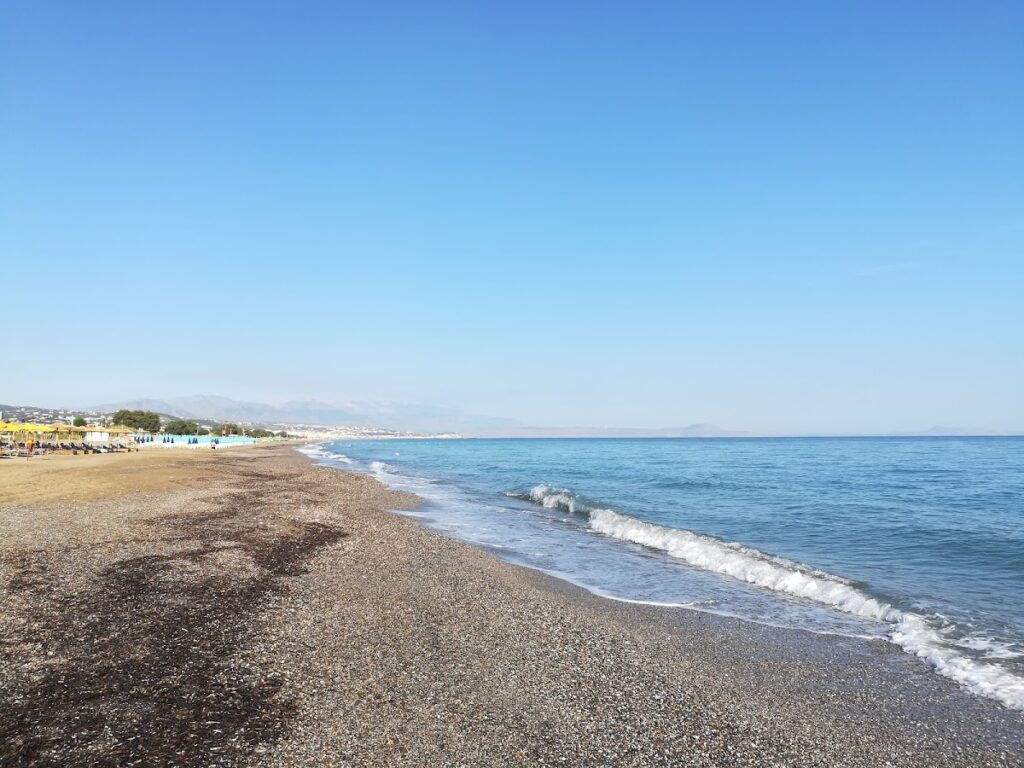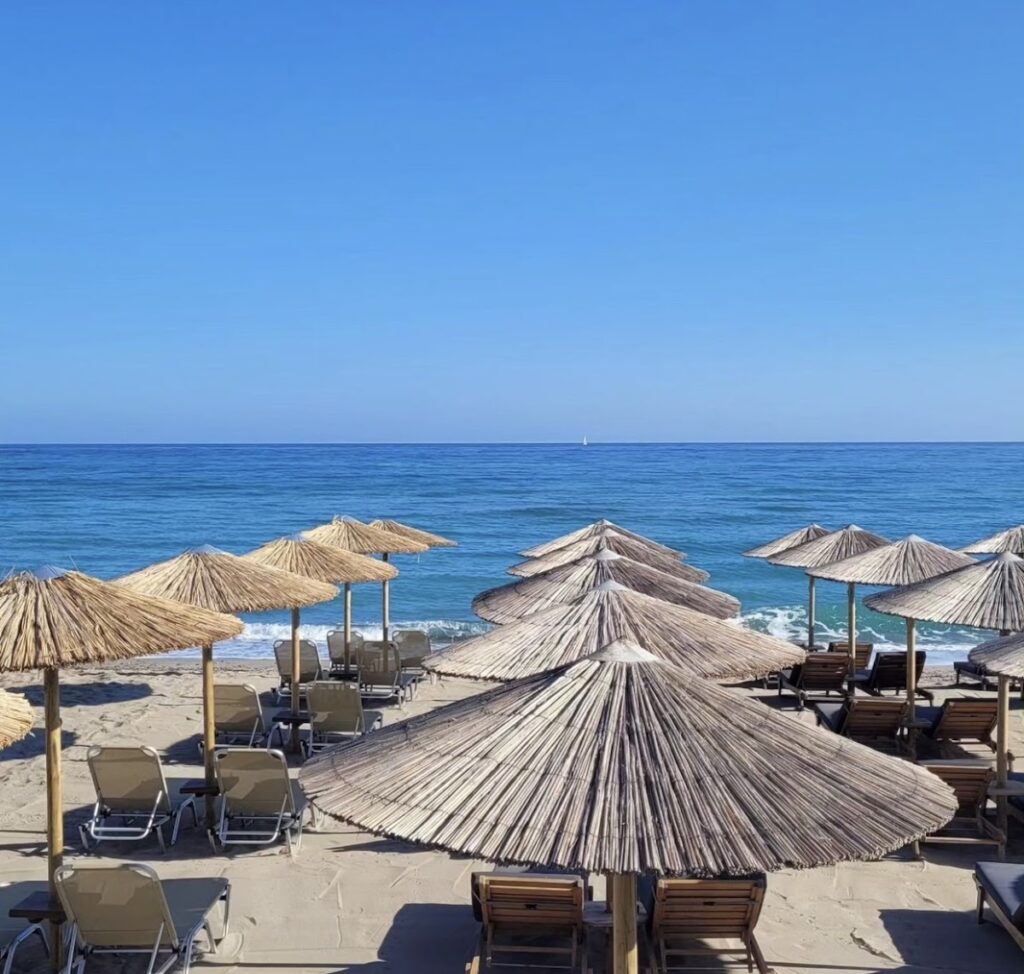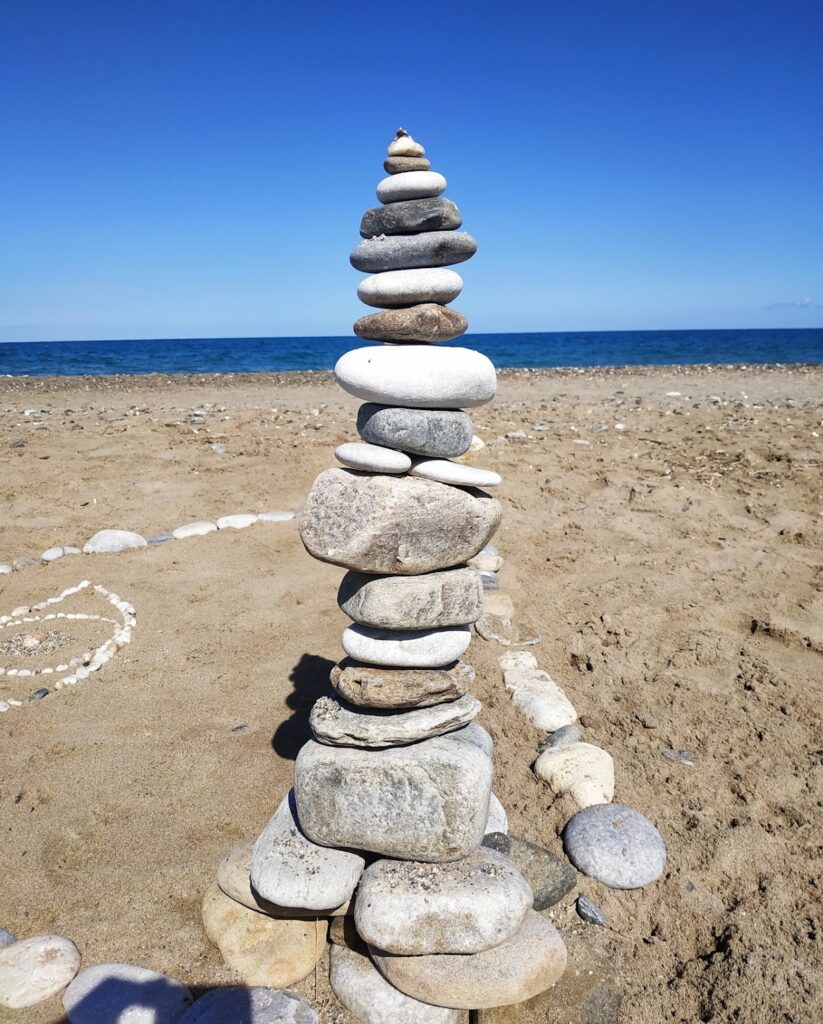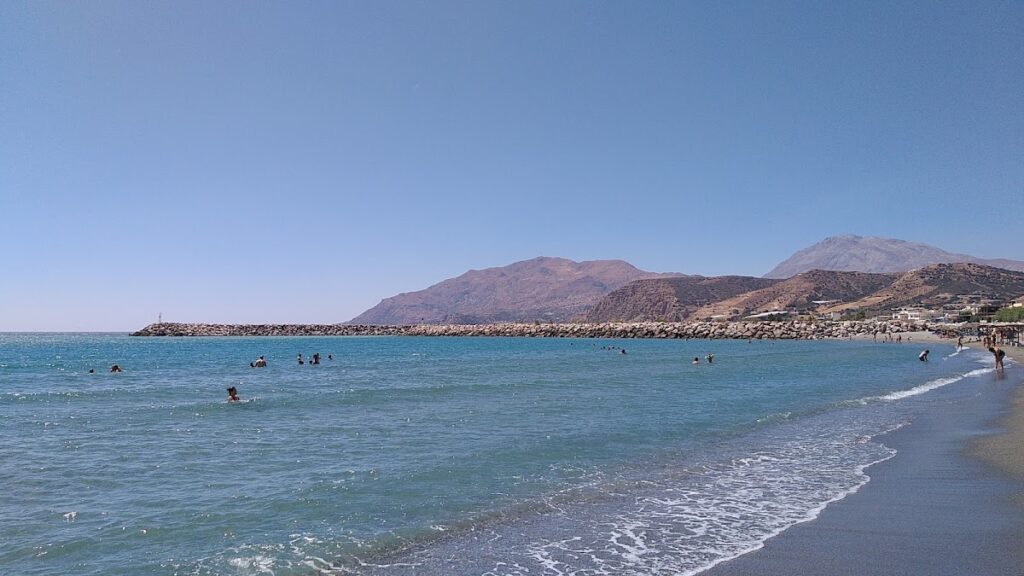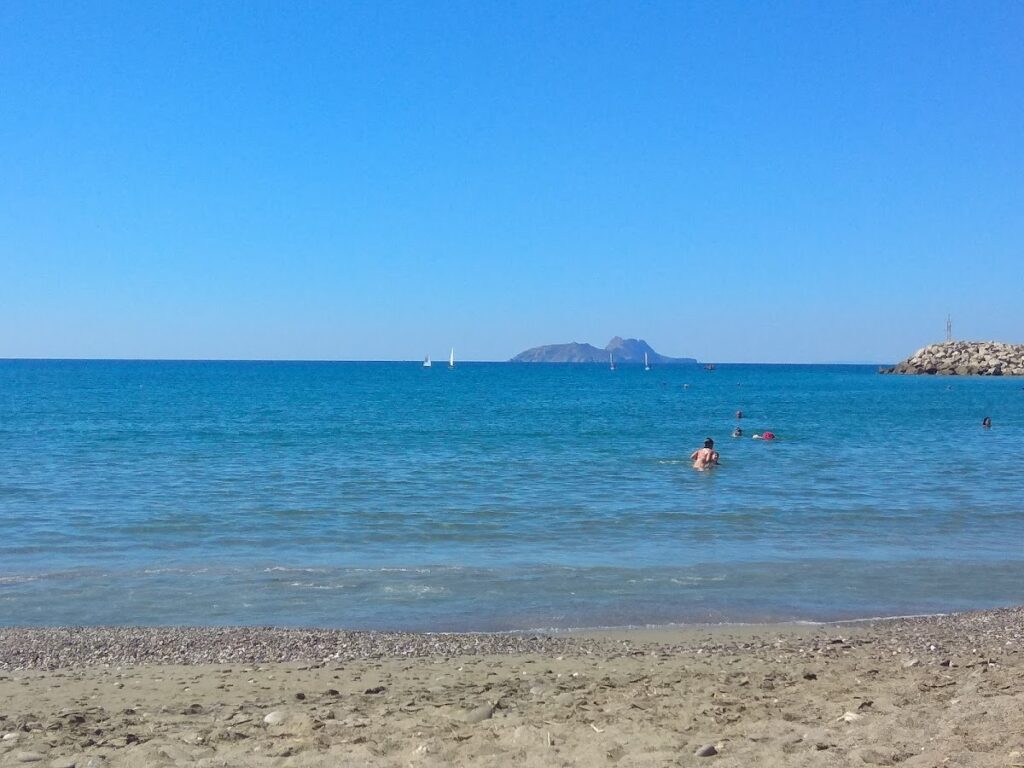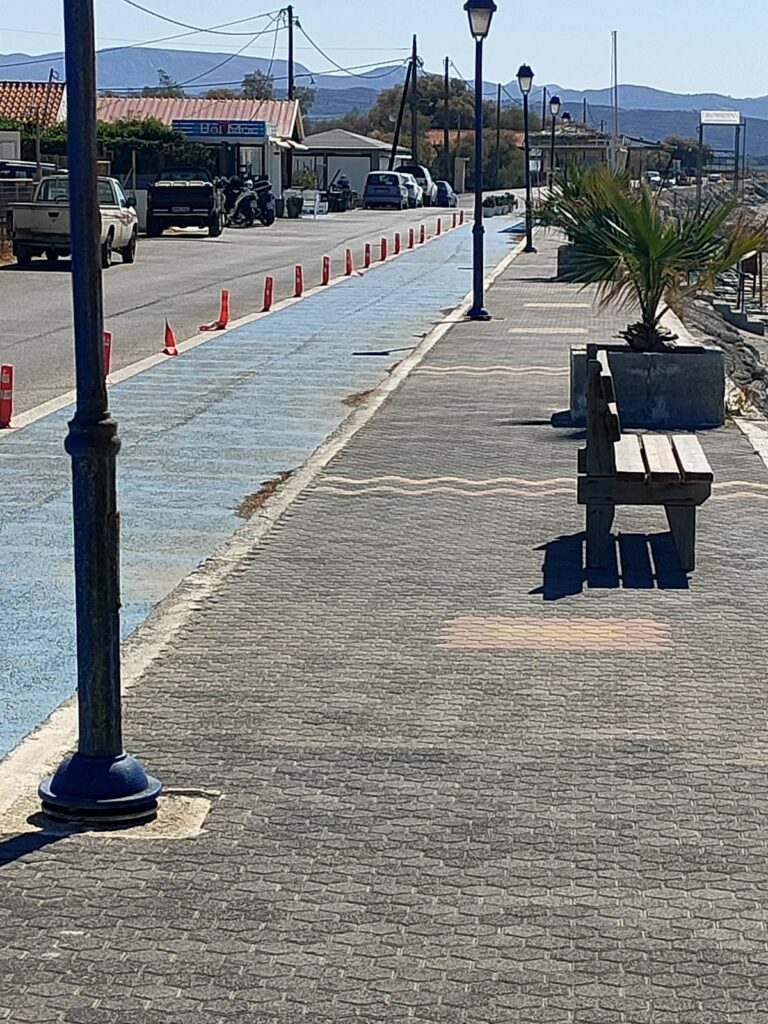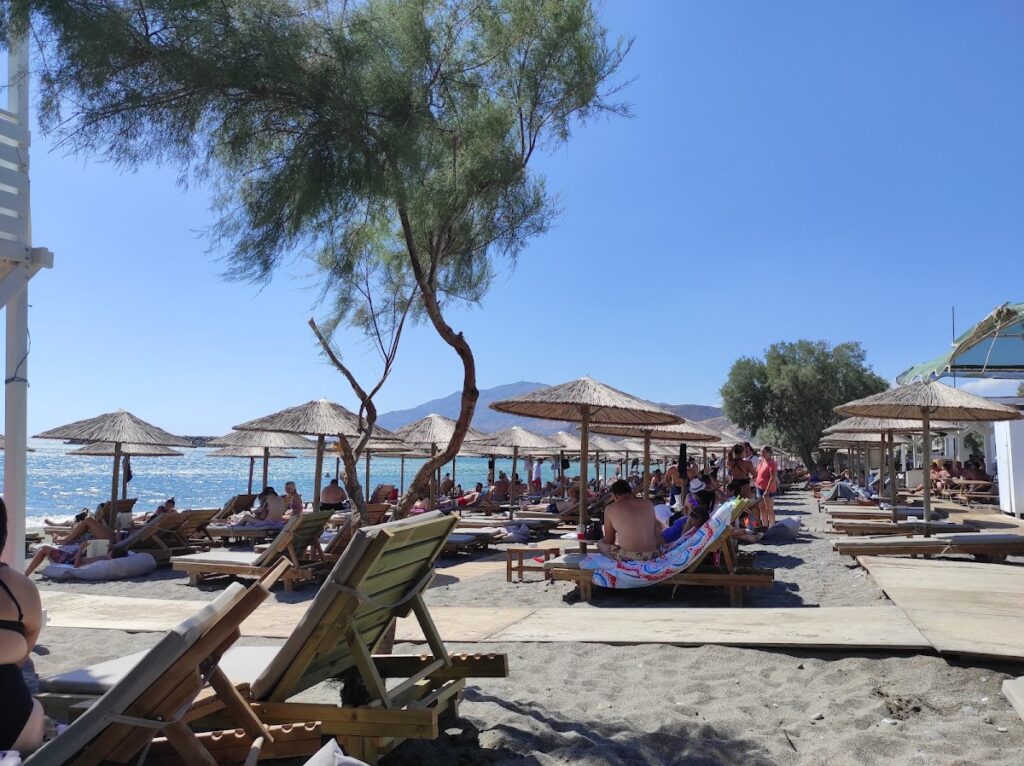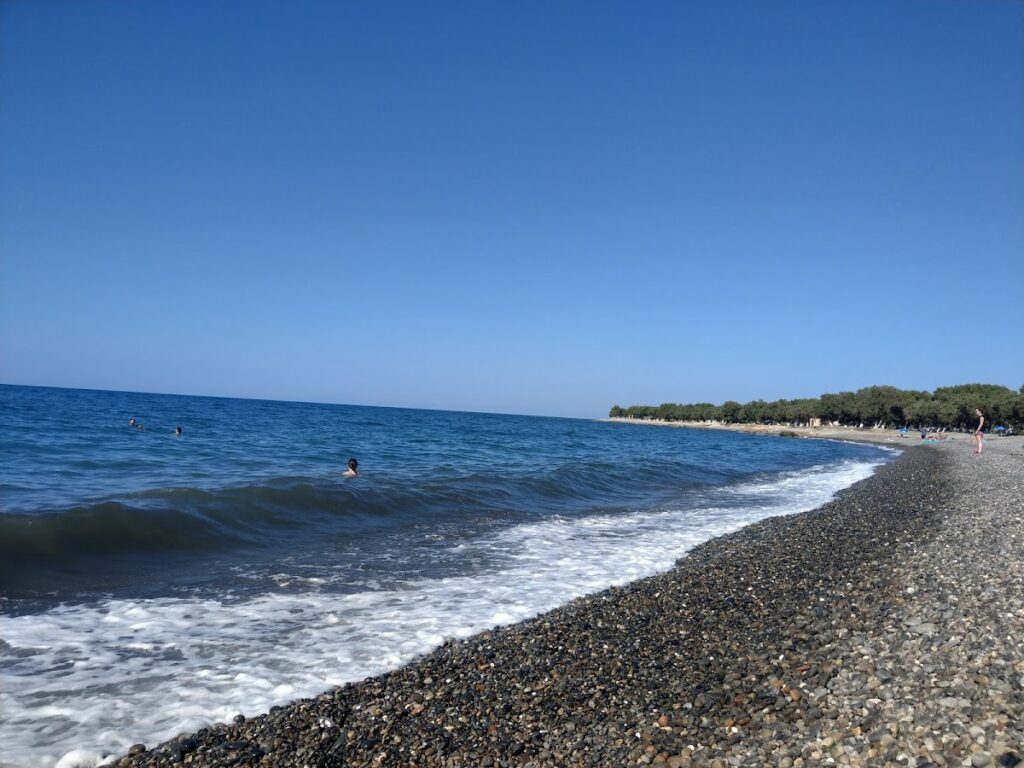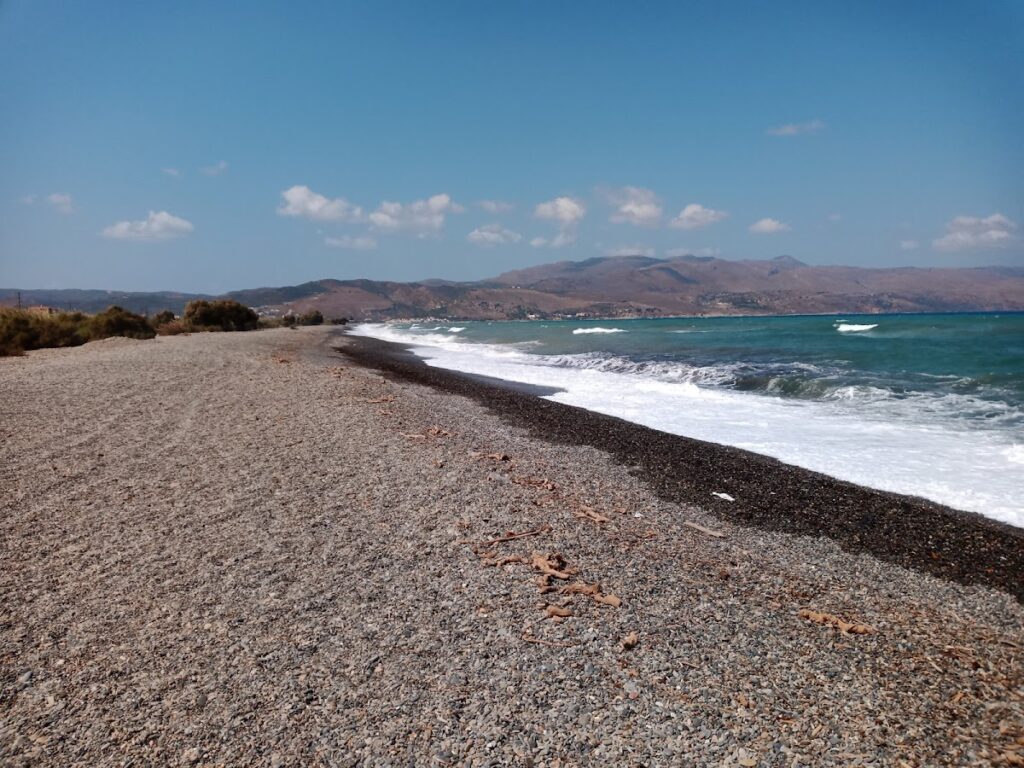Explore Seaturtle nesting point beaches on Crete Island
Find a beach with Seaturtle nesting point facilities near you
Crete’s coastline serves as a vital nesting ground for sea turtles, a significant indicator of the health and vitality of the marine ecosystem. This page provides an in-depth exploration of the sea turtle nesting points scattered across the island. By understanding and respecting these crucial habitats, visitors and locals alike can contribute to the conservation efforts ensuring the survival of these ancient mariners. Delve deeper to learn about the specific locations, the species that frequent them, and the measures in place to protect these natural wonders.
- Georgioupolis beaches
- Sand
- Shallow
- Blue
Georgioupolis, a small coastal town located 38km east of Chania and 21km west of Rethymnon, is a seaside resort nestled in a verdant valley crisscrossed by rivers and springs. Situated on the western edge of a sprawling 10km beach, the town’s beach spans 2km to the east, beginning at the Almiros river and terminating at Kavros beach, a natural continuation of the former. The beach in Georgioupolis is sandy, dotted with dunes, and has shallow waters.
The beach is well-maintained and child-friendly, with lifeguards on duty. Caution is advised during windy conditions due to sea currents. Amenities such as umbrellas, showers, and food and drink stalls are available for beachgoers. Approximately 700m east of the port, the Perastikos river bifurcates the beach, which then widens as it continues eastward. On the opposite end, west of Georgioupolis’s port and near the Almyros river’s exit, lies the picturesque Kalivaki beach.
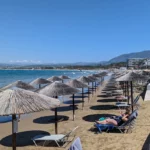
- Plakias beach
- Sand
- Shallow
- Blue
Situated 36km to the south of Rethymno city, Plakias is a charming tourist haven nestled at the mouth of a fertile valley just beyond the Kouroupa range, where the Kotsifos river meets the sea. It owes much of its popularity to the impressive Gialia beach, stretching for 1.3km from the edge of the town to the east, ending at Cape Mouri. This fully-equipped beach, characterized by its crystal-clear, cool waters, is an ideal location for leisurely walks or cycling along the adjacent road. It features numerous hotels and restaurants, as well as beach essentials such as umbrellas, water sports facilities, beach volley courts, snack bars, changing rooms, and showers.
Paligremnos, the eastern portion of the beach, boasts fine sandy shores and is well-appointed with various amenities close to local accommodation and eateries. Noteworthy are the tall, vertical cliffs nearby that prove to be a magnet for climbing enthusiasts. This spot, also known as “Gonates” (knees), is steeped in local lore; it’s said that the epic hero Digenis knelt here to drink from a local spring. An intriguing phenomenon takes place here every full moon from September to January, as the moon’s reflection on the sheer cliffs draws large squids to the beach, which locals catch with long sticks. A few meters south of Paligremnos, you can also discover tunnels once used for transporting coal to waiting cargo ships.
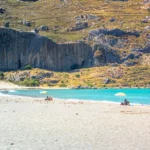
- Balos Beach and Lagoon
- White Sand
- Shallow
- Turquoise
The famous Balos beach is a well-known lagoon found approximately 56km northwest of Chania and 17km northwest of Kissamos, situated between Cape Gramvousa and Cape Tigani below the range of Platiskinos. It is highly photographed and a popular subject for tourist guides in Greece. It was also visited by Prince Charles and Princess Diana on their private yacht many years ago.
Balos is renowned for its striking turquoise waters, picturesque natural scenery, and stunning exotic beauty. During summer, thousands of visitors arrive mostly by ferry from Kissamos port. However, it can be overcrowded, especially in July and August, so it is advisable to visit in the morning before the boats arrive, to enjoy a few hours of isolation in this breathtaking paradise.
The lagoon’s white-pink sandy beaches feature vivid blue and turquoise waters, which are very shallow and warm, ideal for young children. The sand has a lovely pinkish hue in many areas due to millions of crushed shells. The water beyond the lagoon’s rocky boundaries is deeper and colder, perfect for snorkelling. The wider area, including the lagoon, has rare flora and fauna species and is protected under the Natura 2000 program. Eleonora falcons, shags, and cormorants nest in the caves of the area, while the monk seal and the loggerhead sea turtle (Caretta caretta), which are protected species, also find refuge there.
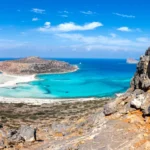
- Platanias beach
- Sand
- Normal
- Blue
Platanias, a coastal hamlet situated 11km west of the city of Chania, has seen a significant surge in tourism in recent years, transforming it from a quaint village into a bustling suburb of Chania. Its close proximity to the city, coupled with its stunning beach and frequent bus services from Chania, have made it the most favoured beach near the city. The original village, nestled on a hillside, offers a breathtaking view of the sea and the islet of Thodorou.
The beach in Platanias is an attractive stretch of sandy shore dotted with hotels of varying class and standard tourist facilities. Beachgoers can avail of all the amenities typical of well-organized beaches, including beach bars, umbrellas, showers, snack bars, lifeguards, and water sports. On the eastern side of the local harbour, near Agia Marina, swimmers can enjoy several small, man-made coves. In the summer, the area’s nightclubs come alive, hosting thousands of both Greek and foreign party-goers who dance until daybreak.
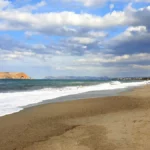
- Agia Marina beach - Chania
- Sand
- Shallow
- Blue
Agia Marina, a charming coastal town, lies just 9km west of the city of Chania. It’s one of Chania’s most sought-after holiday spots, boasting numerous hotels and a full range of tourist amenities. The town’s name is derived from the local Agia Marina church, which holds its festival on July 17th.
Agia Marina is renowned for its stunning chain of sandy beaches. To the west, near the Platania port, there are several small, man-made piers where swimming is possible. To the east, the beach extends to Stalos, offering a long stretch of sand. A variety of services are available along the seashore, typical of a well-appointed beach.
Around 1.5km south of the town, you’ll find the Nerospilia cave, home to spectacular stalagmites and stalactites. Unfortunately, public access is not permitted due to its location on private property. This cave was a place of worship during the Middle Minoan era. While in Agia Marina, don’t miss a visit to the local folklore museum.
Facing the beach of Agia Marina is the protected island of Thodorou, designated as a nature reserve. It’s a sanctuary for the endangered Cretan wild goats, relocated here from the White Mountains, near Samaria Gorge. While approaching the island is generally forbidden, limited boat tours are sometimes available with special permission from the Forest Service. The island’s small sandy beach in the tiny cove, which doubles as the harbour, offers wonderful views of Agia Marina.

- Rethymnon beach
- Sand
- Shallow
- Blue
The golden sands and crystal clear shallow waters of Rethymno city’s beach, located a mere 500m east of the city’s core and adjacent to the Venetian port, are truly captivating. The well-organized beach is conveniently located near the city’s amenities and is the westernmost edge of Rethymno Bay’s 13km beachfront that extends eastwards to Skaleta. Despite being constantly bustling with activity, the expansive beach never feels excessively crowded. The city’s seafront road, Eleftheriou Venizelou Str., which runs parallel to the beach, provides an idyllic setting for evening strolls.
The beach offers numerous services including umbrellas, lifeguards, beach bars, showers, changing rooms, and water sports. A noteworthy fact about this beach is the presence of the loggerhead sea turtle (Carretta carretta) that nests here. Therefore, don’t be surprised to encounter roped-off areas; these are spots where eggs have been discovered and are safeguarded from swimmers. With over 400 nests annually, Rethymno Gulf ranks among Greece’s three most significant loggerhead sea turtle nesting sites.

- Maleme beach
- Fine Pebbles, Sand
- Normal
- Blue
Situated 18km west of Chania, Maleme forms part of the expansive beach that stretches from Kolimbari to the vicinity of Chania. This lengthy bay is adorned with stunning sandy and pebbly beaches, although they are exposed to frequent northerly winds. The beach at Maleme is sandy and the surrounding area is well developed, with all necessary amenities conveniently located near the beach. For those seeking a more secluded spot for a swim, the west end of the beach, adjacent to the old military airport, offers a quieter location.
The name Maleme is believed to derive from the word “Malama”, translating to gold, hinting at the possibility of a gold mine existing in ancient times, although this hasn’t been confirmed. In addition, a domed tomb from the late Minoan period has been discovered near Maleme. Despite having been looted, two cylindrical seals depicting running wild animals were found by archaeologists.
During World War II, Maleme held significant historical importance. It was home to the Allies’ military airport until it was seized by German forces. The Battle of Crete in 1941 saw German paratroopers descend upon Maleme to gain control of the airport. They were met with fierce resistance from local Cretans and Allied forces, leading to substantial casualties on the German side. With only rudimentary weapons at their disposal, the local Cretans dealt a significant blow to the German paratroopers, which drew praise for Cretan patriotism from Hitler himself. This marked the first time in the Second World War where German forces faced strong resistance from a local population. It was also the first large-scale airborne invasion in history, and the last of its kind. The German Cemetery, located on a hill near Maleme, is the final resting place for the 4500 German paratroopers who lost their lives. A monument dedicated to fallen RAF airmen can also be found near Maleme, close to the River Tavronitis bridge.

- Episkopi beach
- Rocks in places, Sand
- Shallow
- Blue
The Episkopi beach, nestled 45km east of Chania and 14km west of Rethymnon, is a charming locale situated in a fertile valley with sprawling lowlands. It borrowed its name from the nearby village, Episkopi, which lies 2km south. Although the place is not widely known among Greeks, the Vardinoyannis family, one of Greece’s wealthiest business families, traces their origins to here.
The beach stretches for 3.5km and is flanked by the Mouselas river on the west and the river flowing through the Petres gorge and beaches on the west. Characteristic of most North Crete beaches, Episkopi is sandy, shallow, and typically wavy. It is well-equipped with numerous hotels, eateries, taverns, bars, and all necessary amenities. The western section of the beach offers lifeguard services, showers, changing rooms, umbrellas, snack bars, water sports, and more. However, due to its considerable length, one can also find quieter spots, especially towards the eastern end near the Petres bridge.
Rethymno and Chania are connected by a main road running parallel to the beach, making access easy either by car or bus. Regular bus services operate from Chania and Rethymno cities. Accommodation options are available in either the local region or in the village of Episkopi. Nearby attractions include the village of Argiroupolis, known for its springs and lush greenery, and Lake Kournas. Episkopi, translating to Diocese in Greek, was indeed the area’s Diocese during the Byzantine Period. However, the ancient Episcopal church of St. Nicholas is now in ruins.
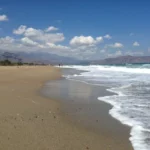
- Lendas beach
- Fine Pebbles, Sand
- Shallow
- Blue
Situated 74km south of Heraklion, on the southern fringes of the grand Asterousia Mountains, is the isolated seaside village of Lendas. This modestly designed tourist resort promises a serene vacation. The journey to Lendas, from Agii Deka near Mires town, via the village of Miamou, is via a narrow paved road that winds through the rough mountains, descending from an elevation of about 1000m to sea level, offering an awe-inspiring view of the Lendas sea.
The vicinity is scattered with beaches, popular among naturists. The beach in the village of Lendas, shielded on the east by Cape Psamidomouri and on the west by the renowned Cape Lion, was once the old port of Lendas, which has since been relocated to Loutra. This beach is the busiest in the area with basic amenities such as umbrellas, showers, sunbeds, and water sports. Beyond the beach, numerous taverns and rental rooms are available. The beach’s trademark is its ducks that wander freely. Additionally, the endangered loggerhead sea turtle lays its eggs on Lendas beach between May and September. For those seeking solitude, the secluded beaches of Dyskos and Loutra are ideal.
Lendas is established on the site of the ancient city Levina, a name believed to be derived from the Phoenician “Lavi” meaning Lion. A lion-like cape located west of the village supports this belief. Legend says this lion was one of the lions pulling goddess Rhea’s chariot and was turned into stone at this location. Another theory suggests the name originates from the Phoenician word “levina”, meaning white, describing the whitish hue of the local rocks. The modern name Lendas is derived from the Greek word “Leondas” meaning lion. This cape, also known as Lion, is an archaeological site that can be visited by a short 15-minute walk to its peak, where you can enjoy a beautiful sunset. Archaeologists have uncovered evidence of early Minoan graves and a settlement, which had ties with Egypt. The ancient city of Levina prospered in the Hellenistic and Roman era, serving as a port for Gortys, the most powerful town in Crete at the time.
East of Lentas, a spring with supposed healing properties can be found. Even today, studies suggest the water aids in healing stomach, blood, and bleeding disorders. Consequently, a massive temple dedicated to the divine doctor Asclepius and Hygeia Sotira was built in the 4th century AC. This temple gained fame as a center for hydrotherapy, physiotherapy, and psychiatry, attracting patients from distant places, such as Libya. Remnants of the temple, a Byzantine church dedicated to Agios Ioannis Theologos, and Roman baths can still be found in the area. Levina was presumably abandoned in the 7th-8th century due to frequent pirate attacks.
East of the village, opposite the Psamidomouri Cape, a rock resembling a crouching elephant can be seen, with another beach formed opposite the rock. Further on, Cape Trafoulas bears a resemblance to a crocodile from Lendas. According to a local legend, Cleopatra once visited Lendas with her favorite animals, namely a lion, a crocodile, and an elephant. She was so enchanted by the place that she left her animals behind when she returned to Egypt. To this day, these “animals” remain there, patiently waiting for Cleopatra’s return.
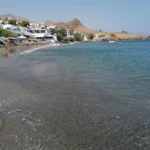
- Skaleta beaches
- Rocks in places, Sand
- Shallow
- Blue
Commencing 11km east of Rethymno and extending 3km eastward is the Skaleta beachfront, marking the end of the expansive beach of the Bay of Rethymno. The first resort you encounter after Pighianos Kampos is Sfakaki, which is exceptionally well arranged.
Stavromenos beach is the next stop, just 1km away, named after the area’s synonymous settlement. The beaches here are predominantly sandy and meticulously organized, with spots featuring pebbles and tiny rocks. As you journey eastward, the sandy stretch narrows down and gradually fades until it vanishes at the end of the Rethymno Gulf.
Continuing another 1km, you will reach the final segment of the immense East Rethymnon beachfront, Skaleta. Like all beaches on the north coast, Skaleta beachfront is exposed to the winds and typically experiences waves. The surrounding area has seen considerable development in recent years, now abounding with large hotels and tourist facilities. Regular bus services are available from Rethymno to Sfakaki, Stavromenos, and Skaleta.
From May to September, summer nights bring an extraordinary sight as loggerhead sea turtles lay their eggs in the Gulf’s sand. It’s not uncommon to see small areas of the beach cordoned off and inaccessible to visitors where nests have been spotted.
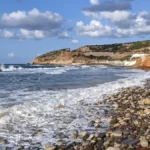
- Gerani beach
- Fine Pebbles, Sand
- Normal
- Blue
Situated 13 km west of Chania city, nestled between Maleme and Platanias, lies the quaint coastal village of Gerani. The village is nestled in a lush valley filled with olive and citrus groves, which were once the primary source of income for the villagers. Today, tourism drives the economy of Gerani.
Stretching across 2.5 km, Gerani’s beach is known for its beautiful sand and crystal-clear water. The beach is equipped with numerous amenities such as umbrellas, showers, beach bars, water sports facilities, and lifeguards, making it an ideal destination for family vacations. Several tamarisk trees provide shade, and for those preferring less crowded spots, there are unorganized parts of the coast. However, visitors must tread carefully, as the sandy beach serves as a nesting ground for the Caretta caretta turtles from May to September.
The village of Gerani got its name from a simple water-pumping method used in the village. The method involved the use of a wooden fork and a horizontal piece of wood, with a rope tied at one end to a bucket and a counterweight at the other end.
Historically, Gerani is thought to be the site of ancient Kydonia, according to some scientists. It is also believed that the village once housed a temple dedicated to Goddess Vritomartis, the Cretan counterpart of Goddess Artemis.
The village witnessed a battle against the Turks in 1867, where the Cretan rebels emerged victorious. However, fearing retaliation, the locals asked the rebels to leave, leading to the Turks returning and causing havoc. Gerani also holds significance as the place where famed Cretan novelist John Kondilakis started his teaching career in 1885-1886. The school where he taught, located in Pano Gerani, still stands today.
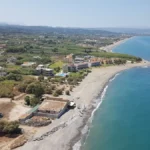
- Agiannis beach
- Sand
- Shallow
- Blue
The Agiannis, or Agios Ioannis (Saint John) beach, nestled on the Gavdos island, is situated 4km west of Sarakiniko beach. You can access it either via a bus ride starting from Karave, Gavdos’ harbour, or by a one-hour walk from Sarakiniko. The stunning beauty of the beach and its surrounding area can’t be captured within these lines of text. It’s no wonder that Discovery Channel rated Agiannis as the world’s second-best beach, only surpassed by a beach in Hawaii. Indeed, Agiannis is an awe-inspiring secluded sandy beach, set amidst a wild African-esque landscape.
The location is adorned with sand dunes, exquisite rocks, pines, and junipers. The beach is unorganized but features a small nearby tavern and a mini-market. The sea is shallow, and the water exhibits remarkable clarity. A visit here will undoubtedly convince you that this wonderful location is one of the most beautiful on Earth. Naturism is permitted in this tranquil area, though you’ll have more privacy at the neighbouring Lavrakas beach. Camping is also allowed, as long as you respect the delicate environment and the protected junipers.
The beach inherits its name from the chapel of St. John. Ruins of ancient buildings and engraved tanks have been discovered around the church and the area’s hill. Remnants of a Roman building can be found on the beach. The stunning juniper-wood, known as Kedrodasos, is located to the north and west of the beach, and it holds significant ecological importance. A Hellenistic cemetery, referred to by locals as the cedarwood, is situated north of Kedrodasos. The cemetery, which has been recognized as an archaeological site, is home to 20 carved graves, albeit all have been plundered and looted.
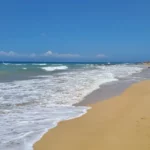
- Kalivaki beach at Georgioupolis
- Sand
- Shallow
- Blue
Located 38km east of Chania and 21km west of Rethymnon, Kalivaki is the furthest beach to the west in the bay of Georgioupolis. Nestled near the exit of the Almyros and Boutakas rivers, which maintain a steady flow of water year-round, Kalivaki is a gorgeous sandy beach. The water here is particularly cool, owing to the influence of the rivers and freshwater springs. Kalivaki is a well-appointed beach, complete with umbrellas, water sports facilities, and nearby restaurants. Its protective positioning relative to the other Georgioupolis beaches makes it an excellent choice for children, especially on windy days.
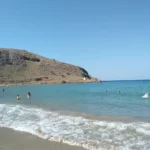
- Misiria beach
- Sand
- Shallow
- Blue
Pervolia, Misiria, and Platanias, also known as Platanes, form a trio of suburbs that adjoin the city of Rethymnon, and are situated 3-5km west of the city. Previously individual settlements, they have now merged into Rethymnon’s urban district due to the growth of residential areas.
A sprawling sandy beach extends in front of these suburbs, forming part of a 13km long coastal strip that begins near Rethymno’s harbour and reaches as far as Skaleta beach. This well-maintained beach offers a wide variety of options for dining, drinking, and lodging. Along this extensive stretch of coastline, loggerhead sea turtles (Caretta caretta) come to nest. These turtles are at risk of becoming extinct, but the Rethymno Gulf stands as one of the three most crucial habitats for the species in Greece, hosting an average of over 400 nests each year.
The name Misiria originates from the Arabic term ‘Misr’, referring to a suburb of Cairo known for its fertile soil. In a similar vein, Misiria is so named due to its productive land, which continues to yield a bounty of vegetables.
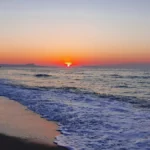
- Pervolia beach
- Sand
- Shallow
- Blue
Three neighbouring suburbs of Rethymnon, Pervolia, Misiria, and Platanias (also known as Platanes) are situated 3-5km west of the city. Initially independent settlements, they have been subsumed into Rethymnon’s urban region due to expansion in residential development.
A lengthy sandy beach, part of Rethymnon bay’s expansive beachfront, extends in front of these suburbs. The beach begins near Rethymnon’s harbour and continues eastwards for 13km until reaching Skaleta. The beach is well-maintained and offers a wide selection of food, drink, and lodging options.
A notable feature of this beach, like the entirety of the vast beachfront, is the nesting activity of the Caretta caretta sea turtle. These turtles, protected by international law, lay their eggs in the sand. Rethymno Gulf is one of Greece’s three critical habitats for Caretta caretta, with over 400 nests documented annually.

- Armenopetra beaches
- Sand
- Shallow
- Blue
The beach of Armenopetra is nestled between the Skoutaris river to the east and the small village of Monobouka to the west, located 5km east of Keratokambos. This stunning beach is one of the most picturesque in the Keratokambos area. The name Armenopetra, translating to ‘Sailing Rock’ in Greek, is inspired by the large, distinct rock that sits in the middle of the beach. It boasts a mixture of petite pebbles and sand, and its waters are a captivating shade of blue. The area is relatively untouched, with only a few greenhouses cultivating bananas and vegetables. This allows for tranquil, secluded spots on the beach, potentially for those who prefer to sunbathe in the nude.
Just west of Armenopetra, you’ll discover the low sandhills known as Pahia Ammos or ‘thick sand’. Regrettably, these sandhills have experienced significant reduction due to prolonged exposure to irrigation pipes. This has resulted in hardened mud formations. These sand dunes are a unique and scarce ecosystem in Crete, inhabited by rare flora and fauna. If you’re fortunate, you might spot the rare white sand lilies, a sign that summer is drawing to a close.
As you transition from Keratokambos towards the Arvi area, the final stretch of beach you’ll encounter is Cape Peristerionas, situated below the Vahoudianos Xerokambos greenhouses. This beach is entirely uncommercialised and is almost always deserted. However, there’s no natural shade available, so bringing an umbrella is advisable. The beach consists of fine sand and a few small rocks on the eastern side.

- Pigianos Kambos beaches
- Rocks in places, Sand
- Shallow
- Blue
Pigianos Kambos, also known as Pigi beach, is situated 8km to the east of Rethymno, centrally positioned along Rethymno Bay’s extensive beach. The name, Pigianos Kambos, translates to “Plane of Pigi” from Greek, reflecting the fertile fields that belong to the inhabitants of the nearby Pigi village. Today, Pigianos Kambos serves as a coastal tourist destination, albeit less developed than its neighbor, Adelianos Kambos. The area boasts a variety of accommodations, from apartments and rooms to larger hotels, complemented by multiple dining, entertainment, and shopping options.
The beach in Pigianos Kambos offers a peaceful and quieter atmosphere compared to the other beaches in Rethymnon. Between Pigianos Kambos and Stavromenos, visitors can enjoy swimming and snorkelling in the numerous small, rocky coves. A unique feature of Pigianos Kambos is the opportunity to spot protected sea turtle nests, as these creatures choose this sandy beach to lay their eggs.
Regular bus services from the center of Rethymnon make Pigianos Kambos easily accessible.

- Kavros beach at Kournas
- Sand
- Shallow
- Blue
Located between Georgioupoli and Pyrgos, Kavros refers to the expansive beach situated just 4 km east of Georgioupoli, near the hotel bearing the same name. Though the area has experienced substantial tourist development, it’s somewhat less commercialized compared to the adjacent Georgioupolis. Kavros beach is a sandy stretch with transparent, shallow waters; however, its openness to the wind often results in notable wave activity. The beach provides several facilities for visitors, including an array of restaurants, cafes, and bars, making it a perfect spot for an all-day excursion. For those seeking tranquillity, parts of the beach remain unorganized, offering a more serene experience.
The place at its greatest part is developed and only a very small part of it has been left untouched. Between the remaining virgin parts of the beach, there is an extensive and very important ecosystem of dunes. The dunes of Kavros, like all dunes, host a significant and very fragile ecosystem that is home to its own plants. The most important role of the dunes in Crete is that they protect the inner lands from erosion. In the area, in winter we meet small ponds and the landscape is quite different from the summer.
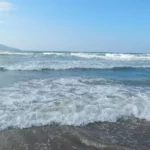
- Lavrakas beach
- Sand
- Shallow
- Blue
Lavrakas beach is situated around 2km west of Agios Ioannis beach, close to Gavdos island’s northern tip. The beach can be reached by a 20-30 minute walk from Agiannis, or by bus from Karave. Lavrakas boasts soft golden sand with scattered rocks and is completely unorganized. It is one of Gavdos’ most secluded beaches since it can only be accessed on foot.
The name Lavrakas is believed by many to be derived from the Greek term for a bass fish, “lavraki”. However, it is more likely that the name originated from the Minoan term “lavrys”, representing the symbol of their civilization, the double axe. This belief is bolstered by the discovery of 20 looted Minoan graves-caves in the northern area of the juniper wood, south of Lavrakas. These caves have been connected to the mythological cave of Calypso, with many asserting that Gavdos is the island where Ulysses was stranded and resided for seven years as per Homer’s Odyssey. Further south of Lavrakas, near Saint Nicholas’ church and within the dried Kedres torrent, remnants of ancient structures have been discovered.
Moving eastwards from Lavrakas, between Lavrakas and Pirgos, lies the small, stony beach of Stavrolimni. It can be accessed from either direction, featuring sand and a few rocks, and is formed at the exit of a stream that originates from the Agios Nikolaos chapel, carrying clay. In April and May, when the clay is still damp, the beach is perfect for a natural spa. It is bordered by a grove of pine and cedar trees.
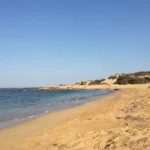
- Kalamaki beach - Heraklion
- Fine Pebbles, Rocks in places
- Normal
- Blue
Kalamaki, a quaint seaside hamlet, is nestled between Matala and Kokkinos Pirgos, 65km southwest of Heraklion. The beach, a 2.5km stretch of the vast Messara Bay coastline, graces the village’s front. Its sandy shore is kissed by the sea, which conceals a slick, flat rock bed beneath its surface. It features large waves, usually stirred by northwest winds, making beach access challenging at times due to the rocky seabed.
The village-facing part of the beach is well-equipped with sunbeds, umbrellas, eateries, accommodation, a lifeguard, playground, and water sports. For a more isolated experience, head southeast towards Kommos beach, a favorite among nudists.
To the north, you’ll find Afratias and the Pahia Ammos beach, which features patches of rocks. Devoid of amenities, the beach does boast a small park used for hosting cultural events like concerts during summer months.
Further north lies the Timbaki military airport, now serving as a resort for Greek Air Force staff. Although the beachfront is accessible, trespassing beyond the fence is prohibited and could lead to arrest. Sometimes, parachuters and skydivers can be spotted descending from small aircraft, courtesy of a local club based at the airport. In 2008, a small plane crashed into the Kalamaki sea, with the pilot miraculously surviving the ordeal. The Tymbaki airport holds ecological significance for the Mesara plains as it’s intersected by the Geropotamos River, which flows out to the beach. This river, the area’s largest, serves as a sanctuary for hundreds of rare birds across its numerous ponds.
The sandy coast of Messara Bay is a protected breeding ground for the loggerhead sea turtle. To prevent nest destruction and avoid frightening these creatures, it’s best not to roam the beach’s darker areas during summer nights.
Although Kalamaki doesn’t boast a significant history due to its relatively new establishment, it’s a popular seaside resort for Kamilari locals. Some believe it once served as a small harbor for Phaestus or Gortys in ancient times, though no concrete evidence supports this claim.
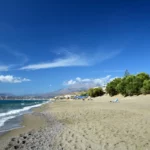
- Adelianos Kambos beach
- Sand
- Shallow
- Blue
Adelianos Kambos, also known as Adele Beach, is a seaside suburb of Rethymnon situated 6km to the east on a flat plain. This area, previously used for vegetable cultivation by residents of the adjoining village Adele, has seen considerable development over the past century, becoming an integral part of Rethymnon city. Access to Adelianos Kambos is straightforward, with local buses running regularly from the city centre.
The extensive sandy stretch of Rethymnon Gulf beach begins at Adelianos Kambos and continues to Skaleta. The suburb offers a variety of accommodation options, from large hotels to smaller establishments, and plenty of choices for dining, shopping, and entertainment. The beach is well-equipped with amenities like umbrellas, lifeguards, changing rooms, showers and bars, making it a popular spot for beach sports and water activities. The sea here is typically shallow but can be wavy, a characteristic of all open beaches on the northern side of Crete. An interesting feature of this beach is the sea turtles that lay their eggs here, leading to the occasional sight of marked nests protected by ropes and signboards.
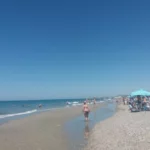
- Platanes beach
- Sand
- Shallow
- Blue
The suburbs of Pervolia, Missiria, and Platanias, also known as Platanes, are situated 3-5km to the west of Rethymnon city. Initially, these were independent settlements that have now merged into the urban region of Rethymnon, as a result of the residential growth over the previous century.
A vast sandy beach extends in front of these suburbs, forming part of the extensive coastline of Rethymnon Bay. Originating near the Rethymno harbour, the beach stretches eastward for 13km until it reaches Skaleta. This well-maintained beach offers a wealth of options for food, drink, and accommodation.
Just like the rest of the lengthy coastline, this beach also serves as a nesting ground for the loggerhead sea turtle. These turtles are under the protection of the Greek State. Rethymno Bay is counted among the three most crucial nesting sites for this species in Greece, with more than 400 nests reported annually.
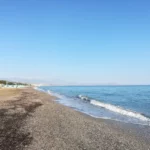
- Kokkinos Pirgos beach
- Fine Pebbles, Rocks in places
- Normal
- Blue
Kokkinos Pirgos, also known as Red Tower, resides 67km west of Heraklion, near the town of Tymbaki. Its name is derived from a tower constructed from red soil, situated at the mouth of the Geropotamos river. As the coastal village of Timbaki’s main port and a hotspot for tourism, Kokkinos Pirgos is home to numerous hotels, dining establishments, and cafes. The area’s climate is typically warm, enabling locals to cultivate fresh vegetables in greenhouses.
The village boasts a lengthy sandy beach that stretches southeast towards Kommos for several kilometres. This expansive beach is a nesting ground for loggerhead sea turtles (Carretta Carretta) during the summer months. Conservation organizations such as Archelon work to protect these sea turtles and their nests. The beach, which is susceptible to western winds, begins at Timbaki’s military airport wire fence on the east and extends to Agia Galini on the west.
The beach’s eastern portion, stretching from the port to the airport, is known as Katalyki. This well-equipped beach features amenities such as umbrellas, sunbeds, lifeguards, and water sports. A coastal road lined with cafes and restaurants runs alongside the beach, making it a popular spot for refreshments. East of Katalyki lies a sizable marsh, a key wetland in the Mesara plain, which is irrigated by the Geropotamos River.
The beach area west of the harbor is known as Makrimaliana. The beach near Kokkinos Pirgos is relatively broad, but as it extends towards Agia Galini, gravel massifs encroach upon it, narrowing the beach and in some places, eliminating it during high tide. This unorganized, remote beach may not be extraordinary, but the wind and sea-carved rock formations that flank it are certainly impressive.
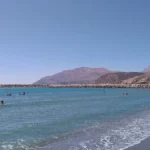
- Tavronitis beach
- Fine Pebbles, Sand
- Normal
- Blue
Tavronitis beach, found 20km west of Chania, is situated on the western side of the historic Maleme airport, one kilometer north of the village of Tavronitis and is named after the Tavronitis river that flows nearby. This long, pebbly beach is just a segment of the expansive coastline that stretches from Kolimbari to Stalos, making it an ideal swimming spot, especially during calm weather as the northern coast of Crete often experiences waves. There are ample amenities nearby, including hotels, tavernas, restaurants, and a variety of tourist facilities.
The beach holds historical significance as it is near Maleme airport, the site of a significant resistance against the German forces in 1941, known as the Battle of Crete. This marked the first time in World War II where the local population fiercely resisted the German army, causing them heavy losses. Despite this, the Germans managed to gain control of a small area east of the Tavronitis river and the airport. Today, visitors can pay their respects at the German cemetery and other monuments dedicated to this historic event.
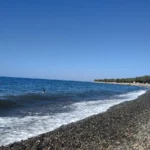
There are no results matching your search.
Reset